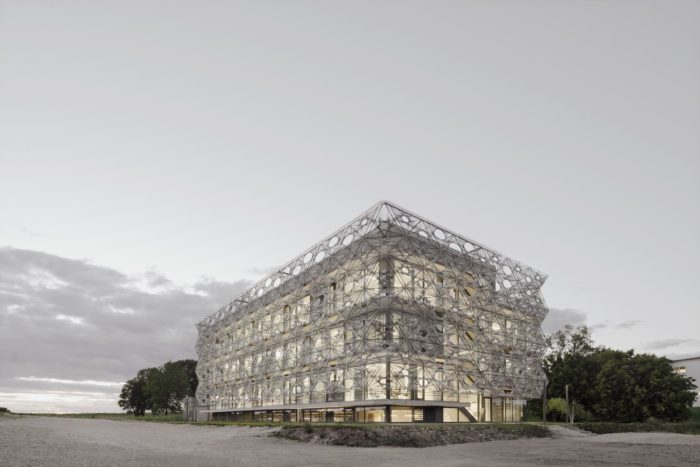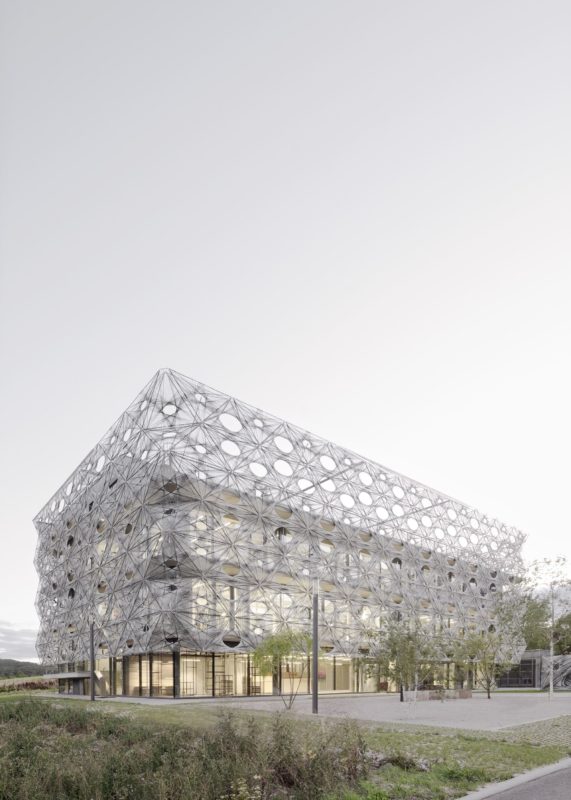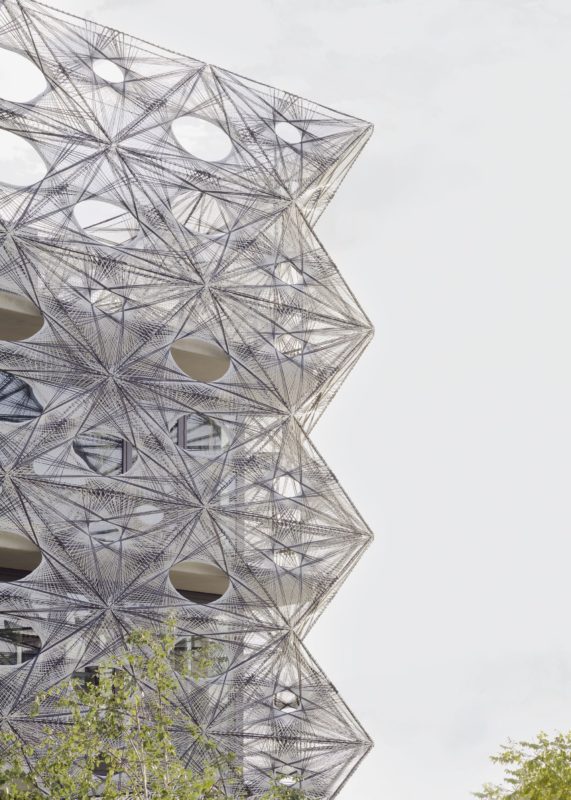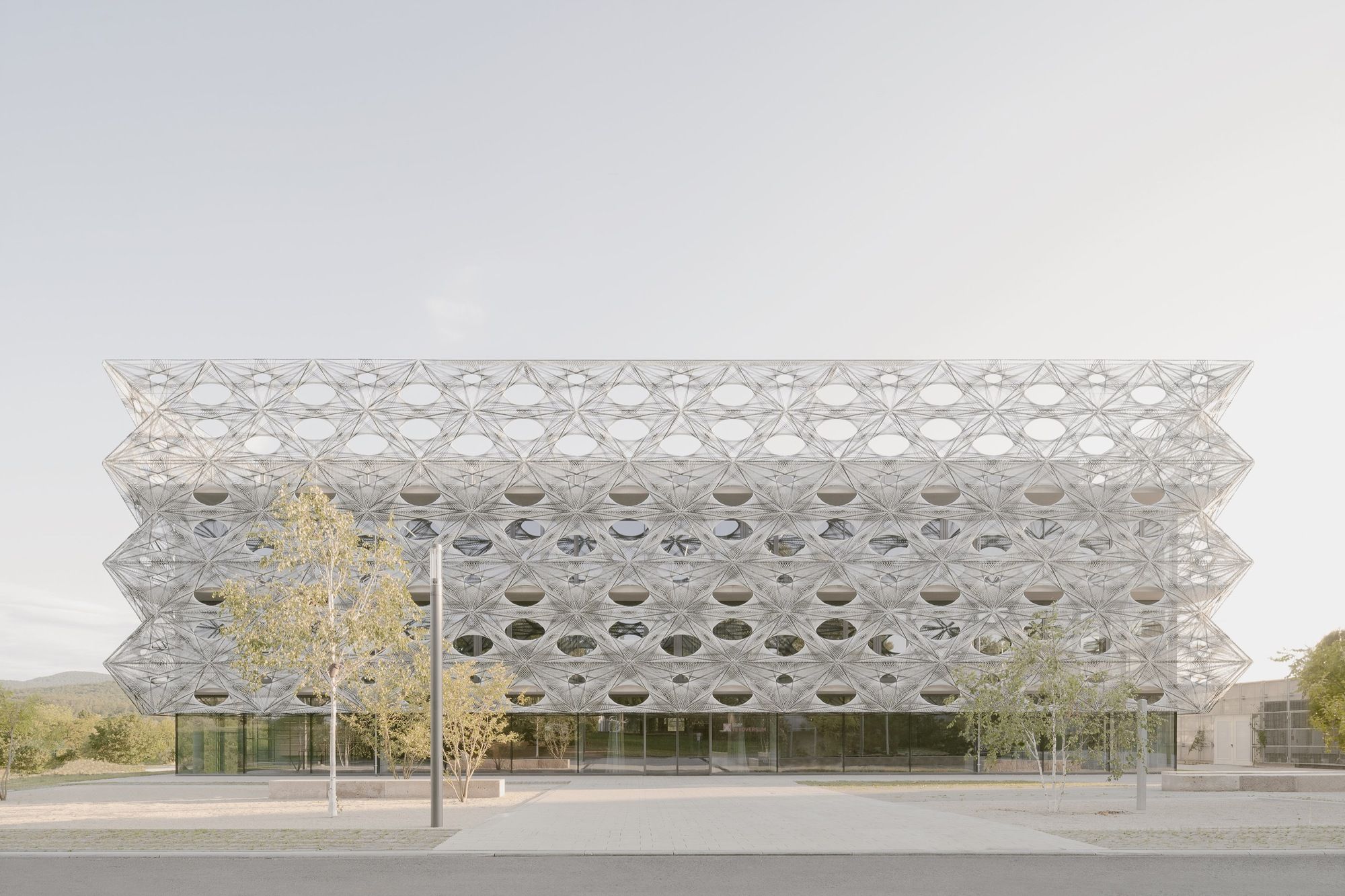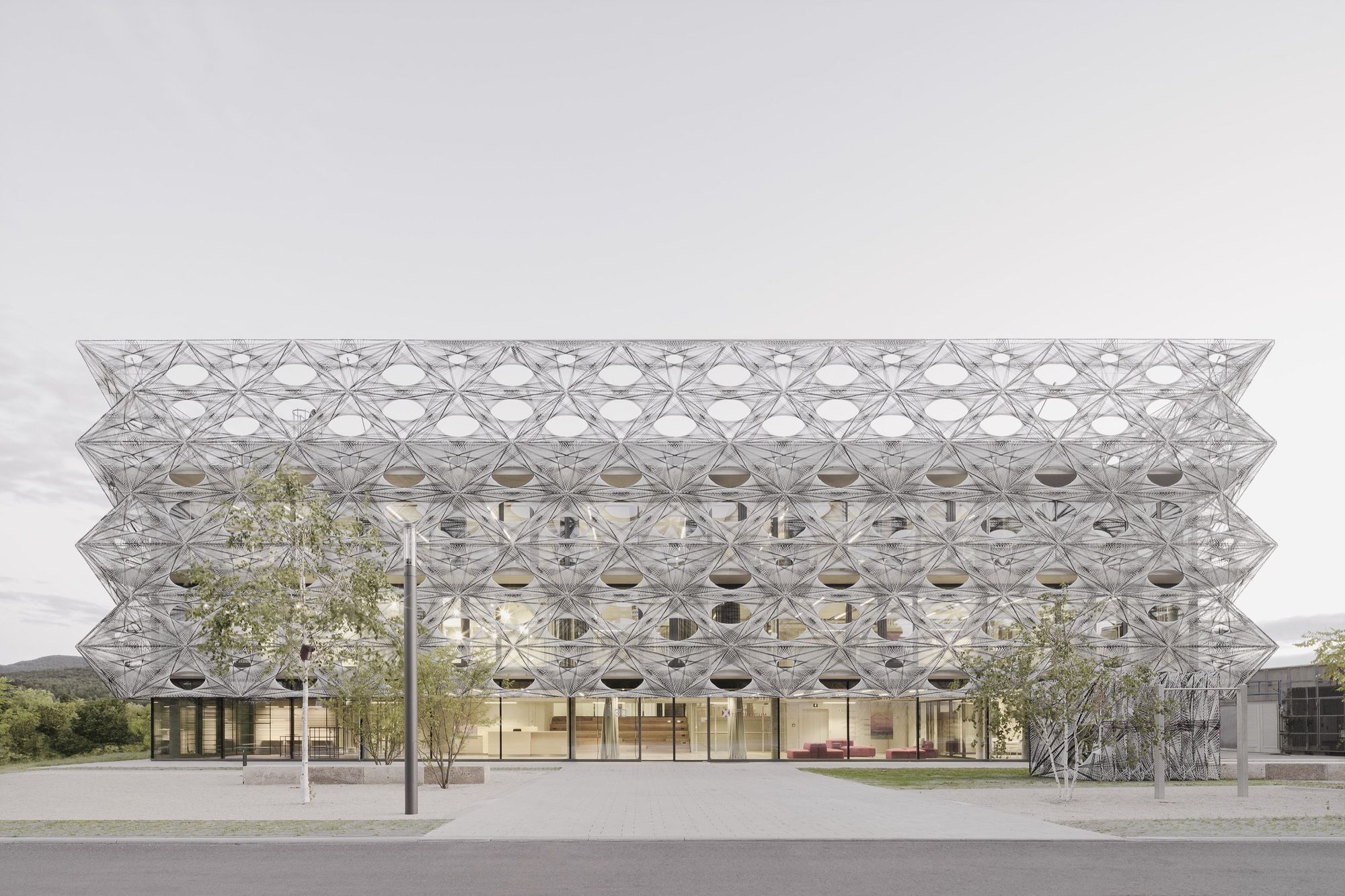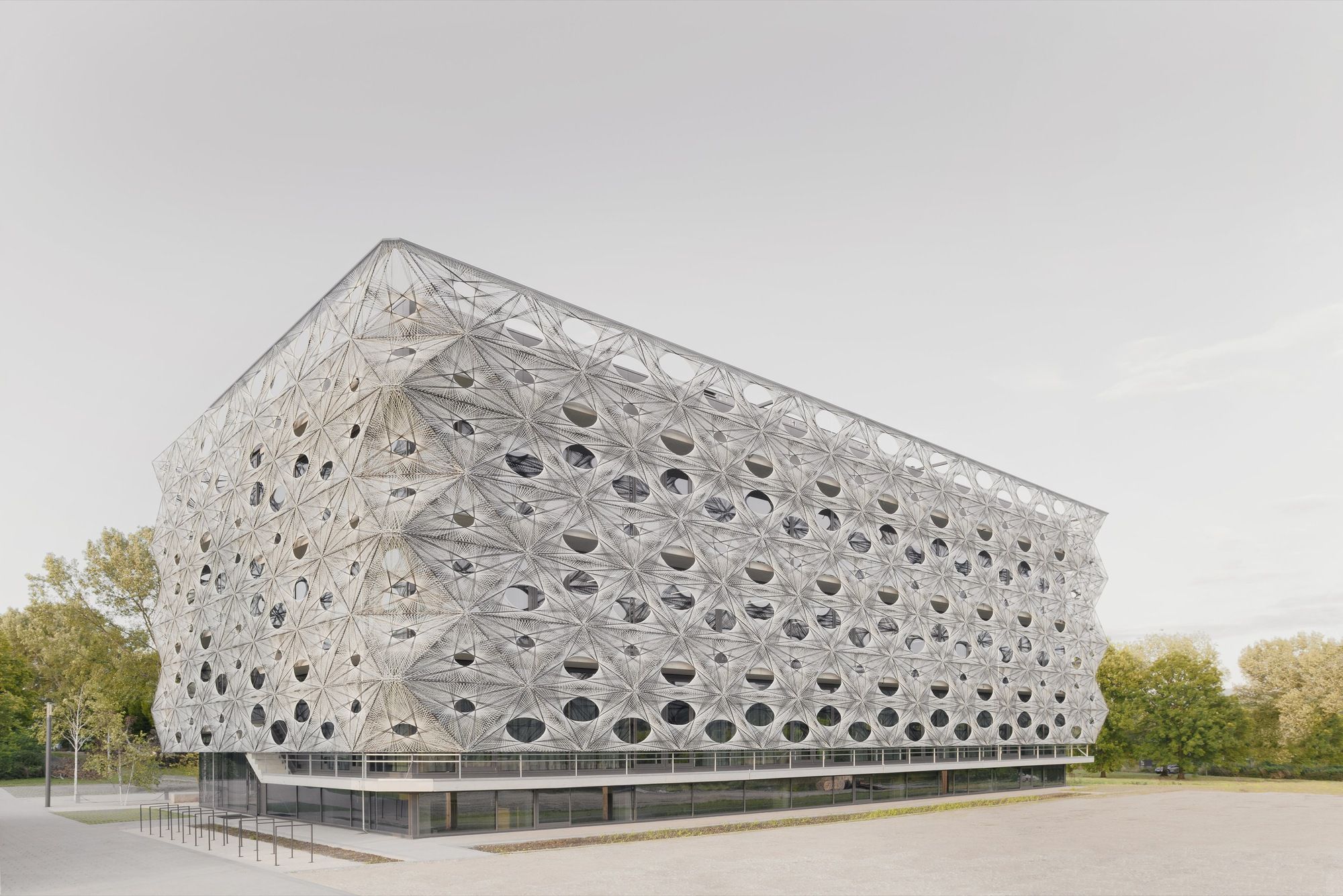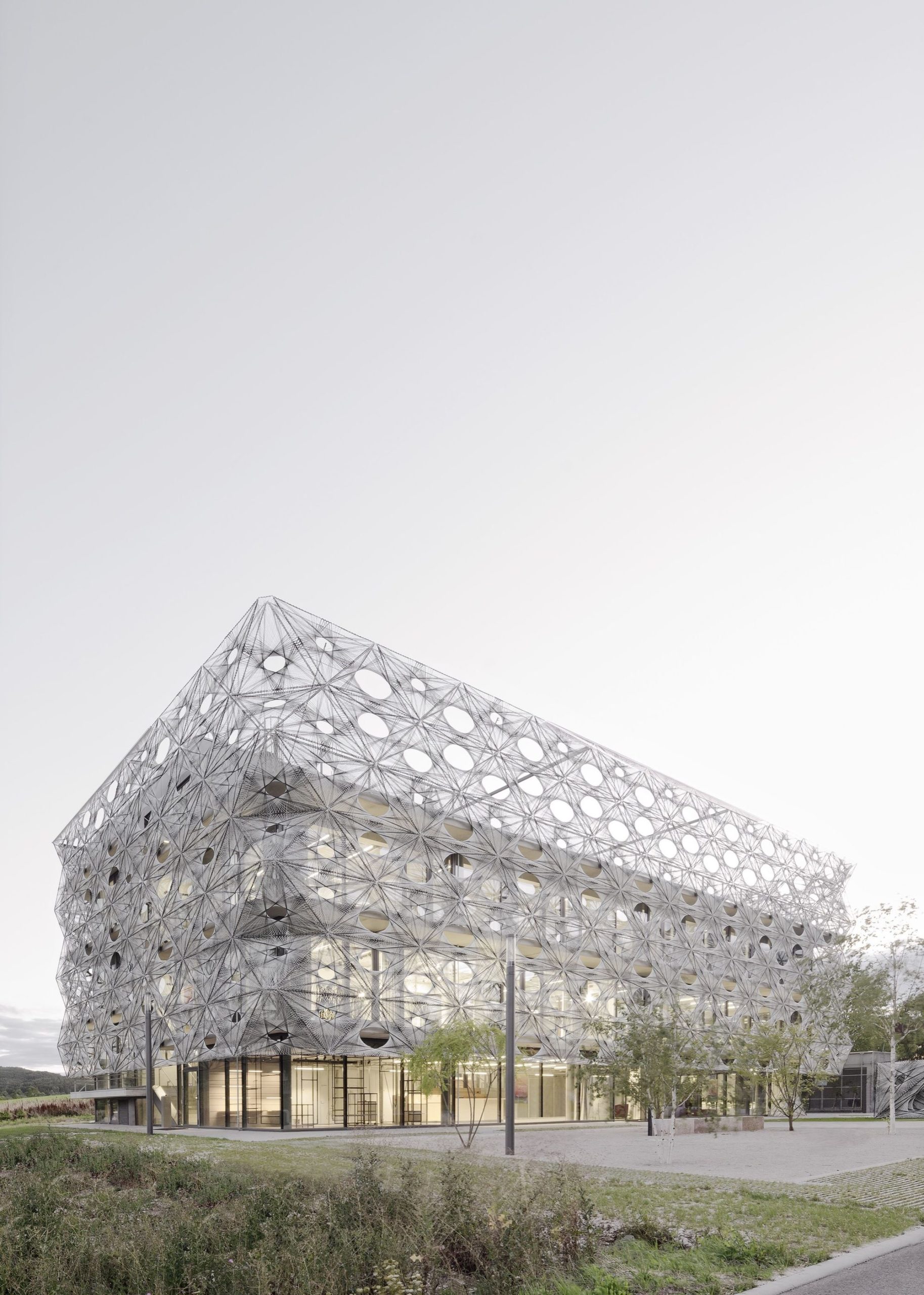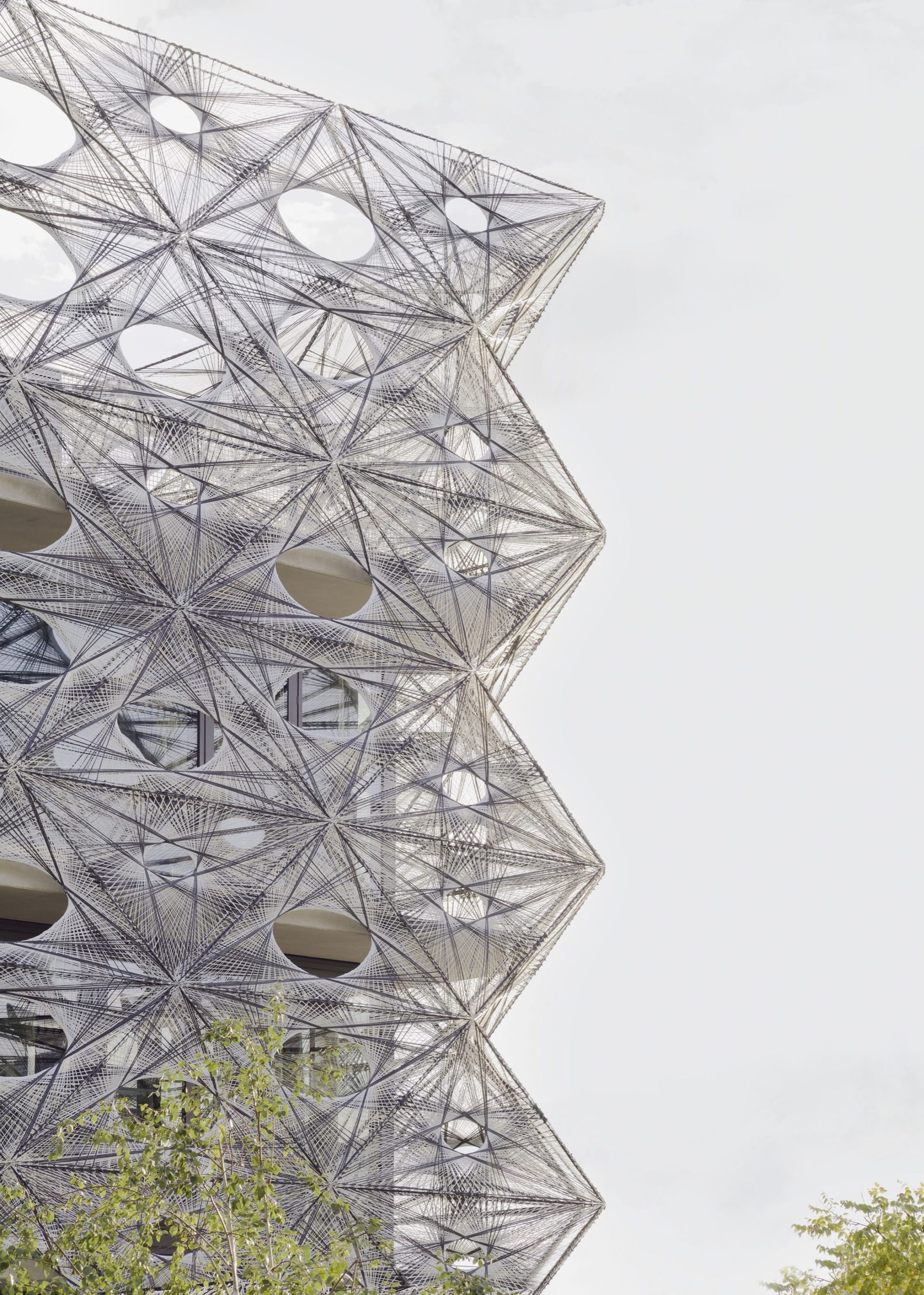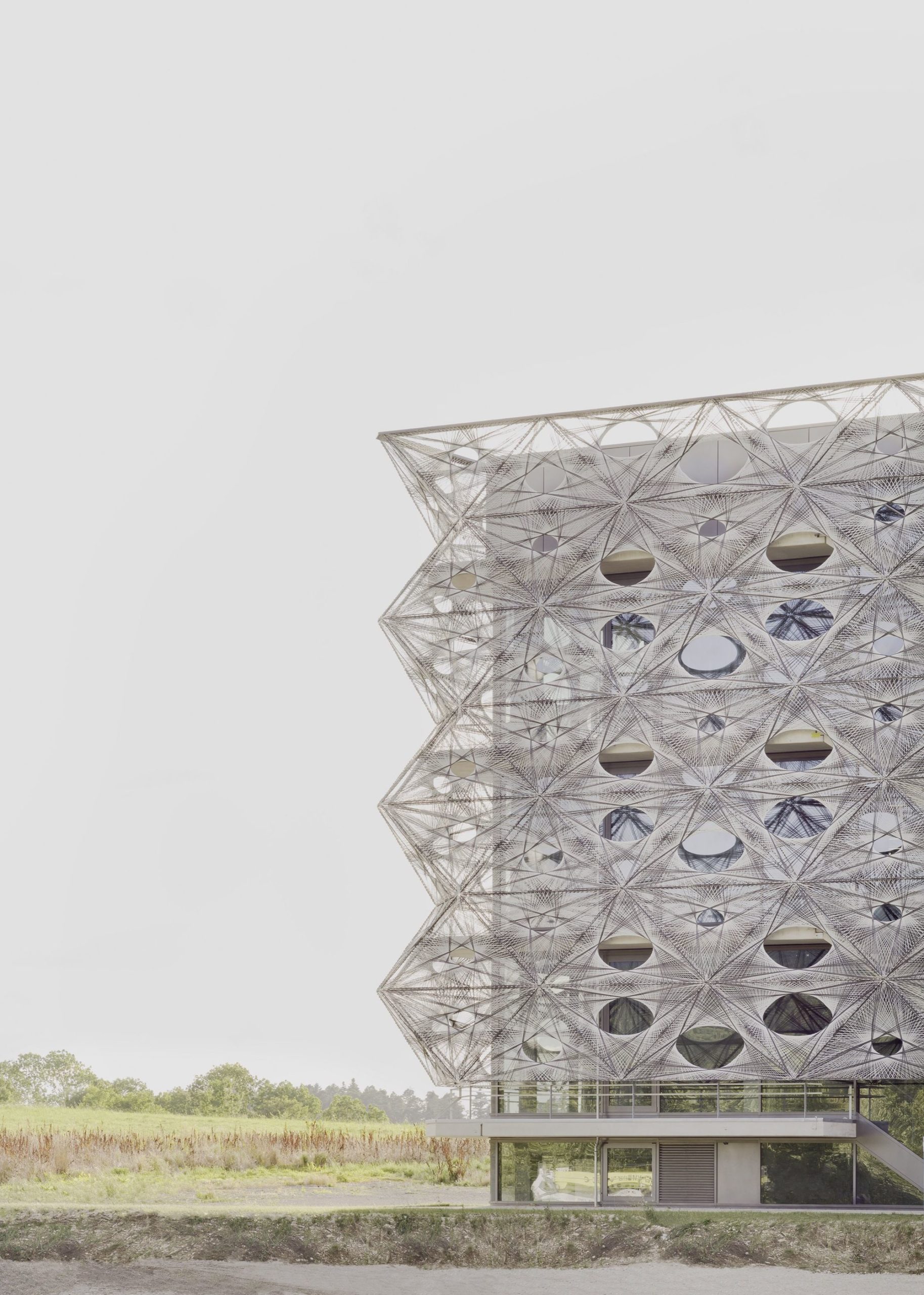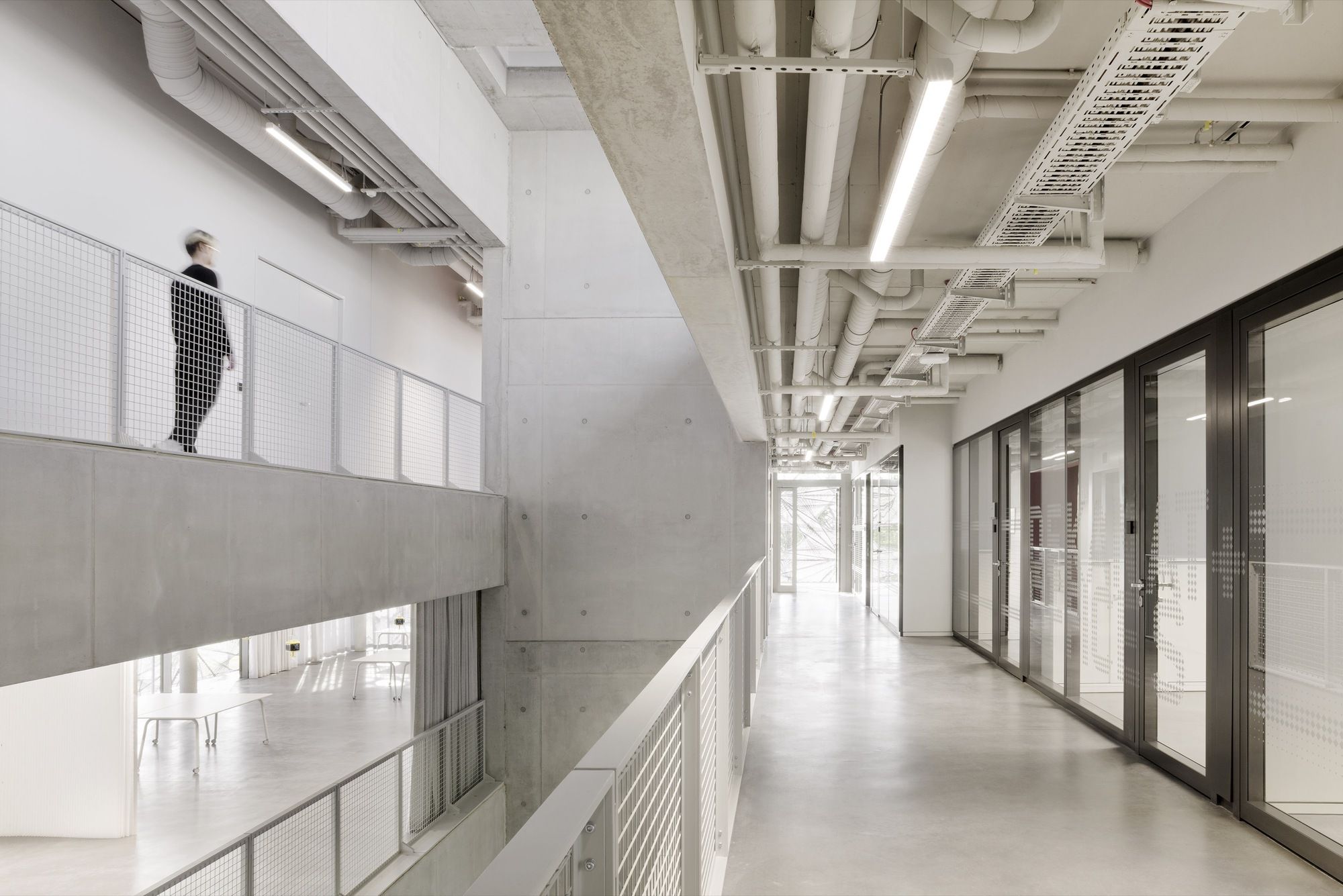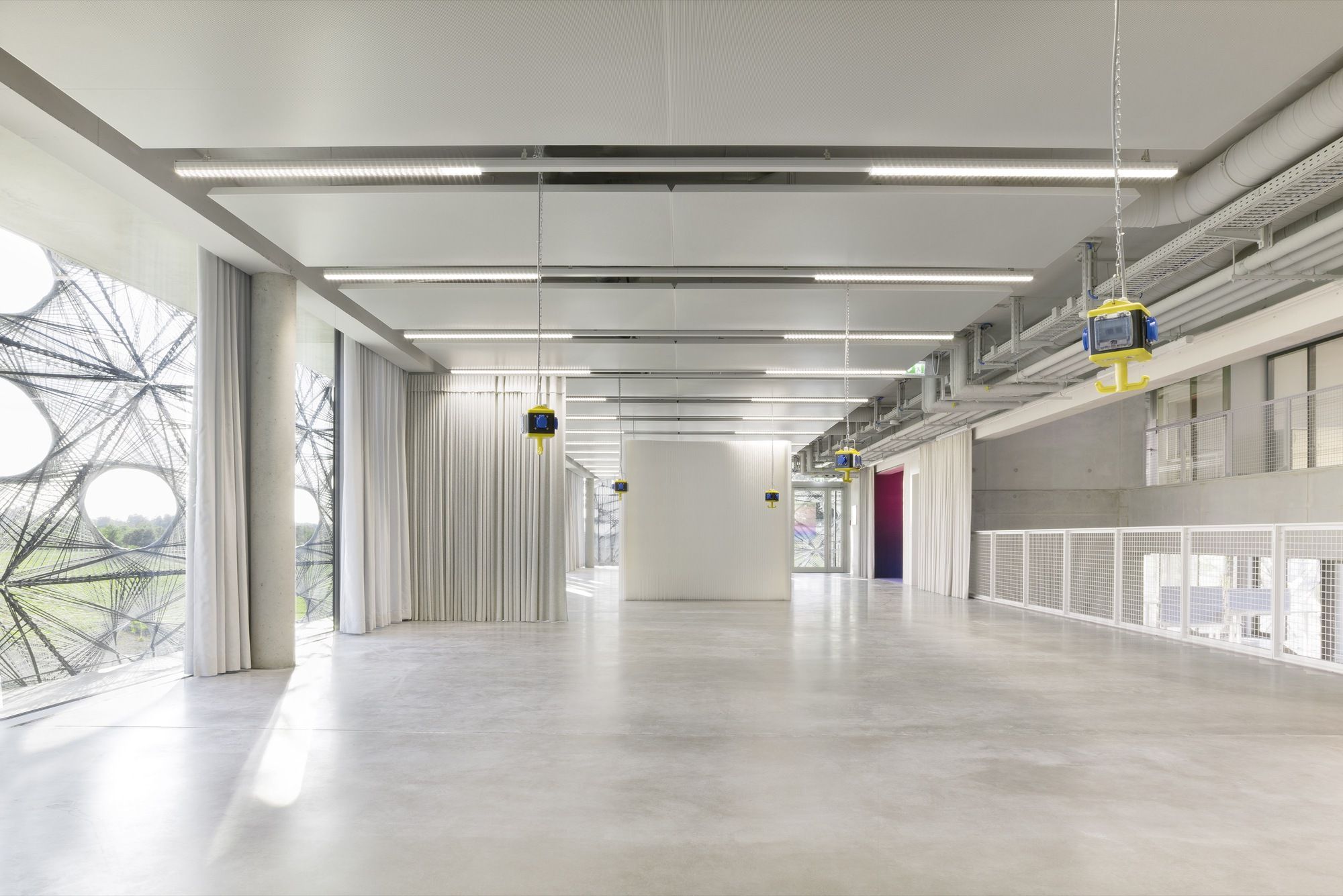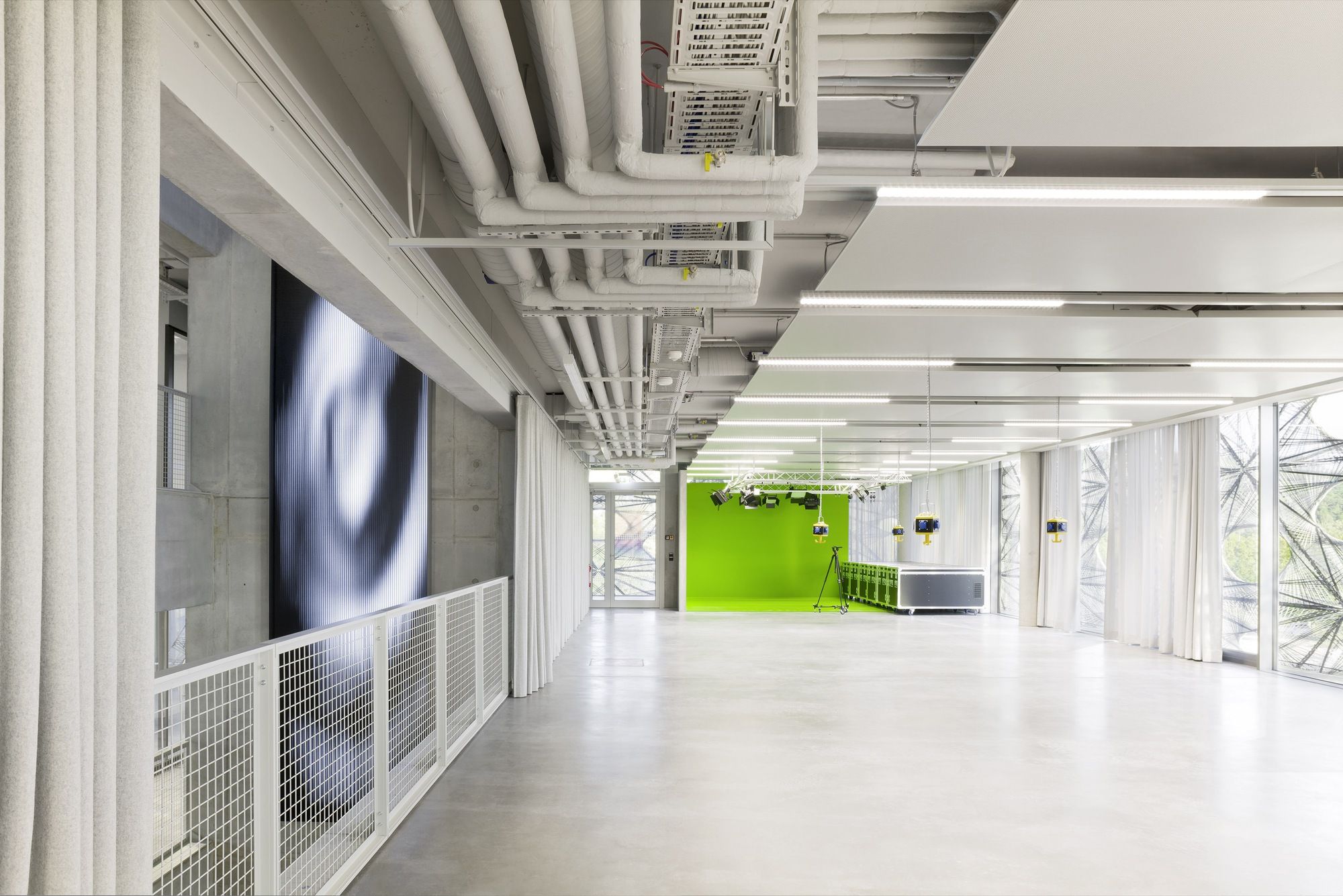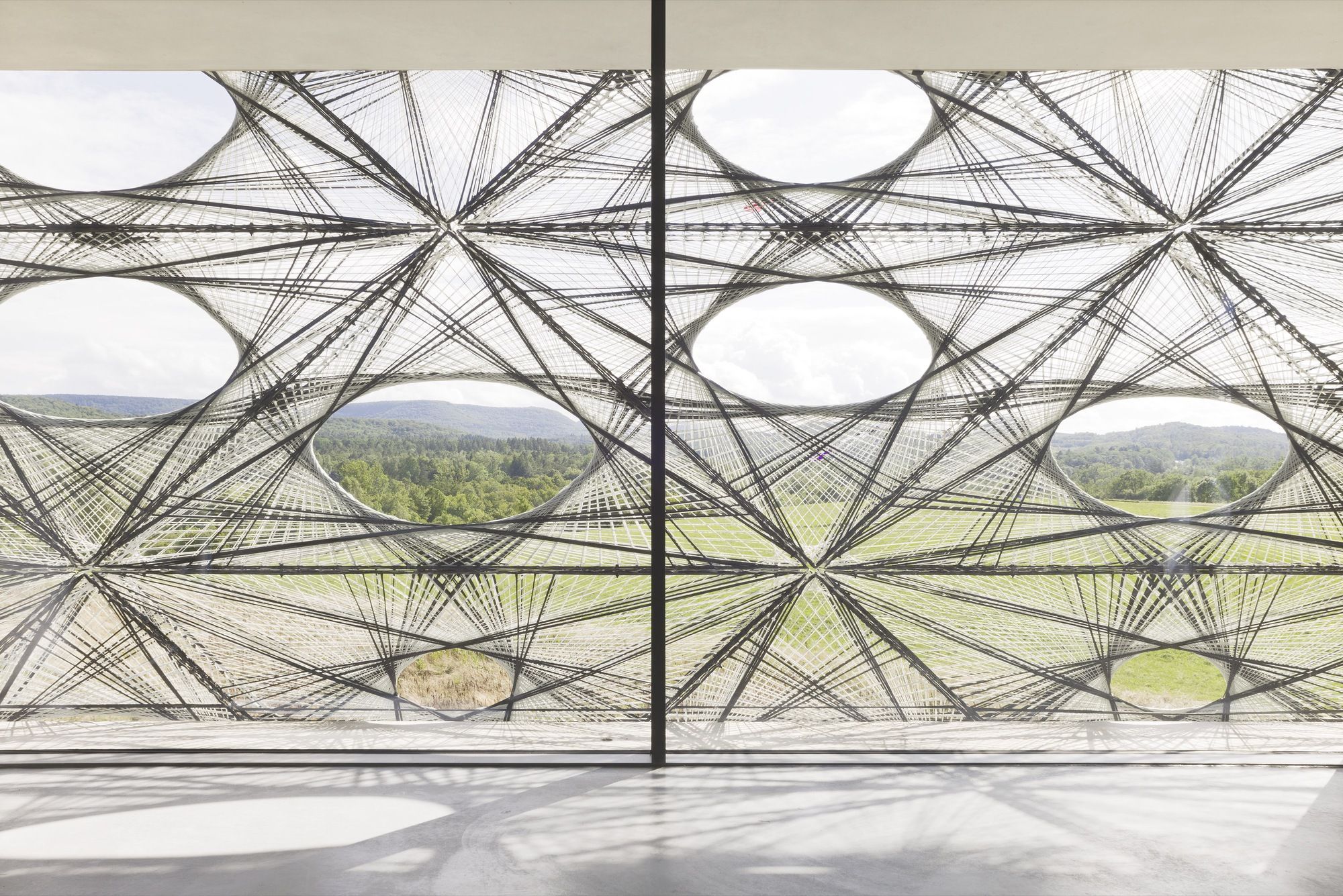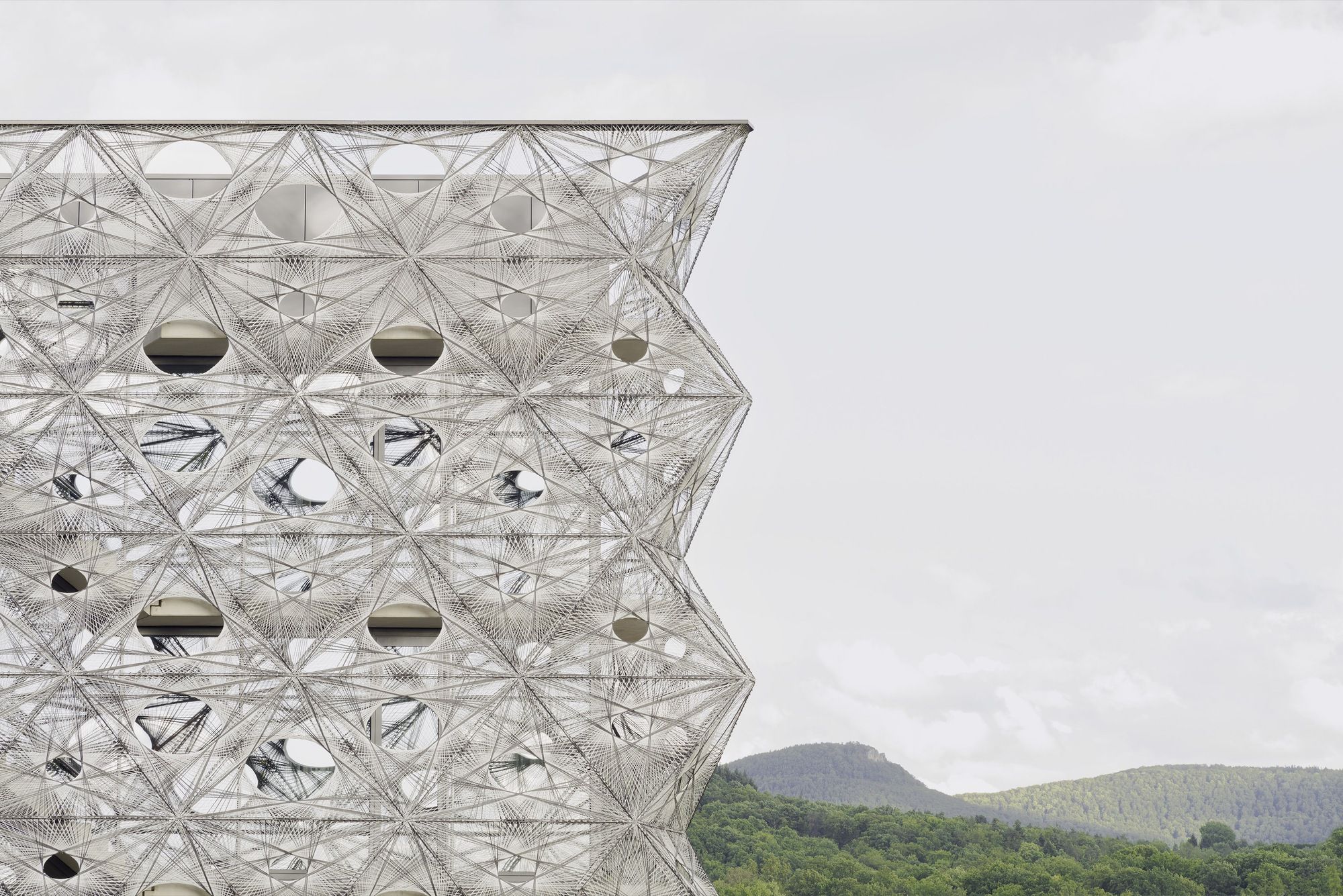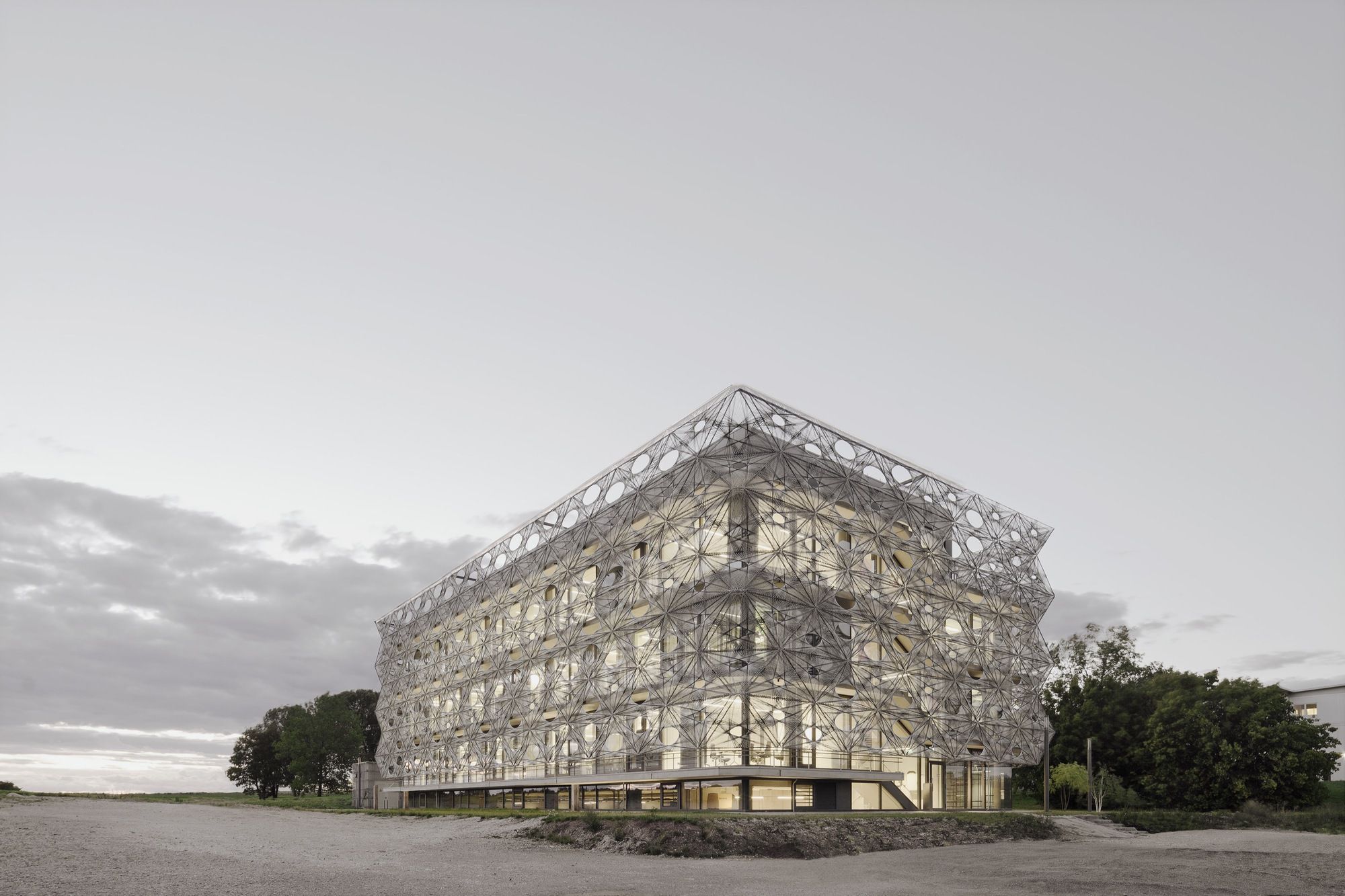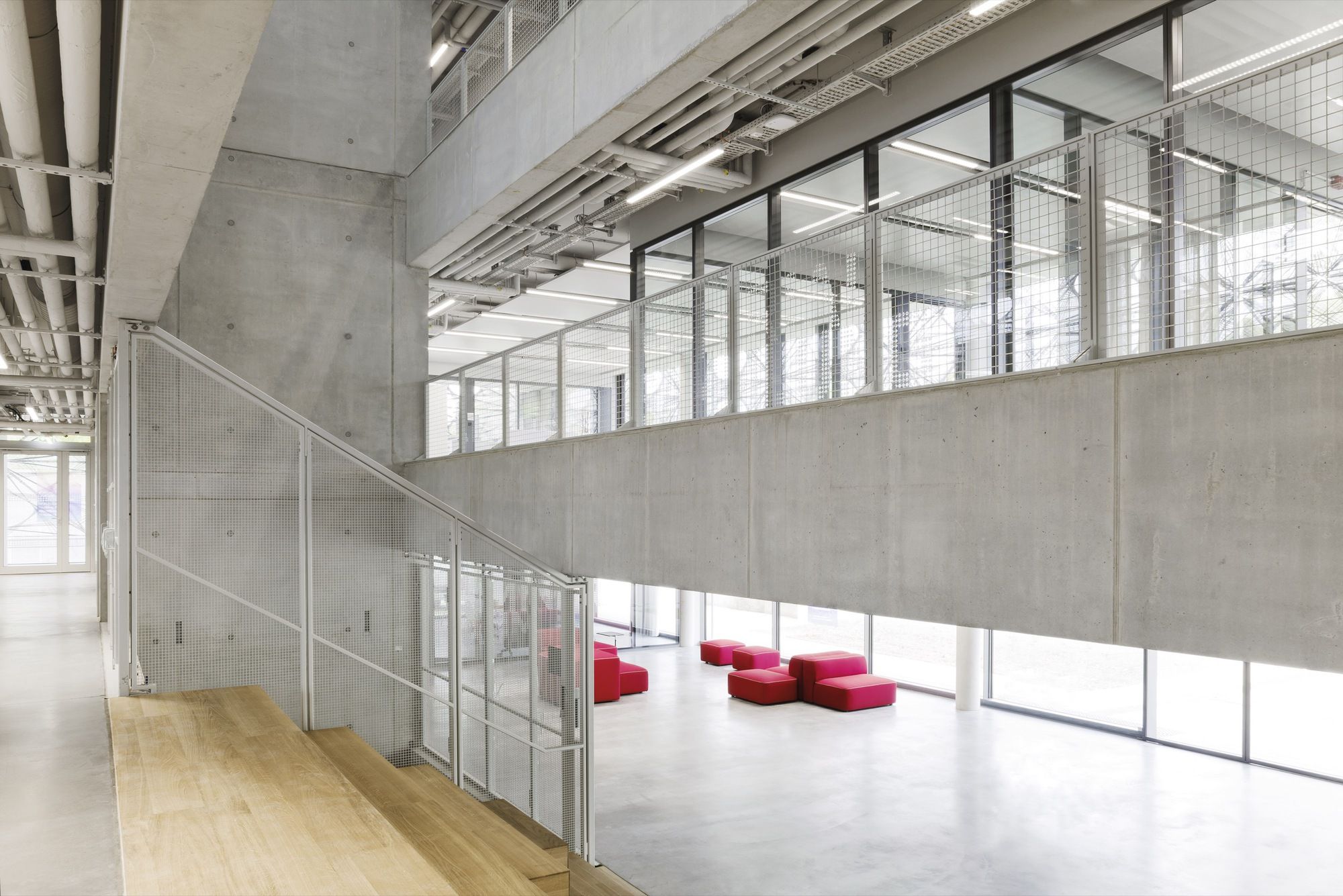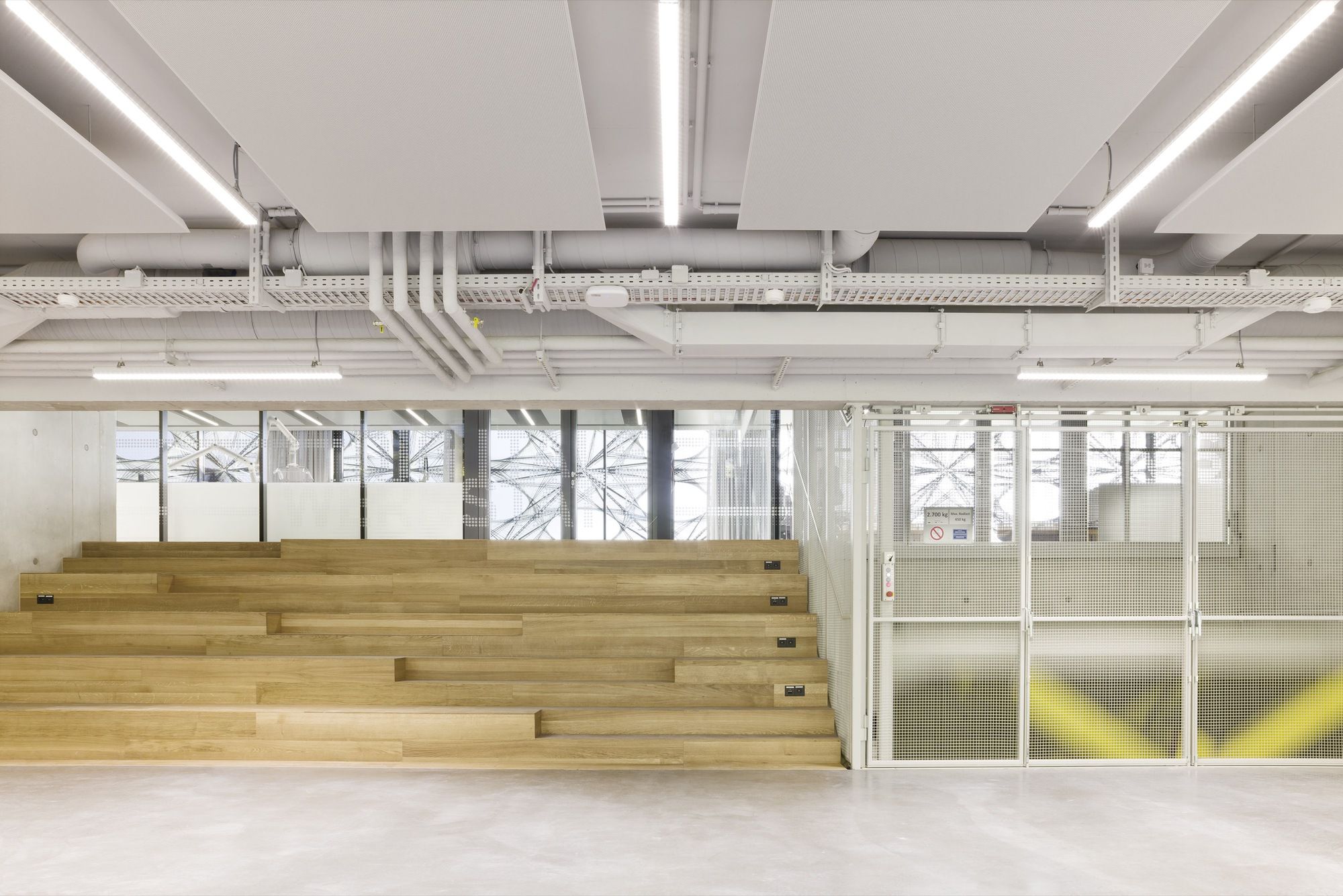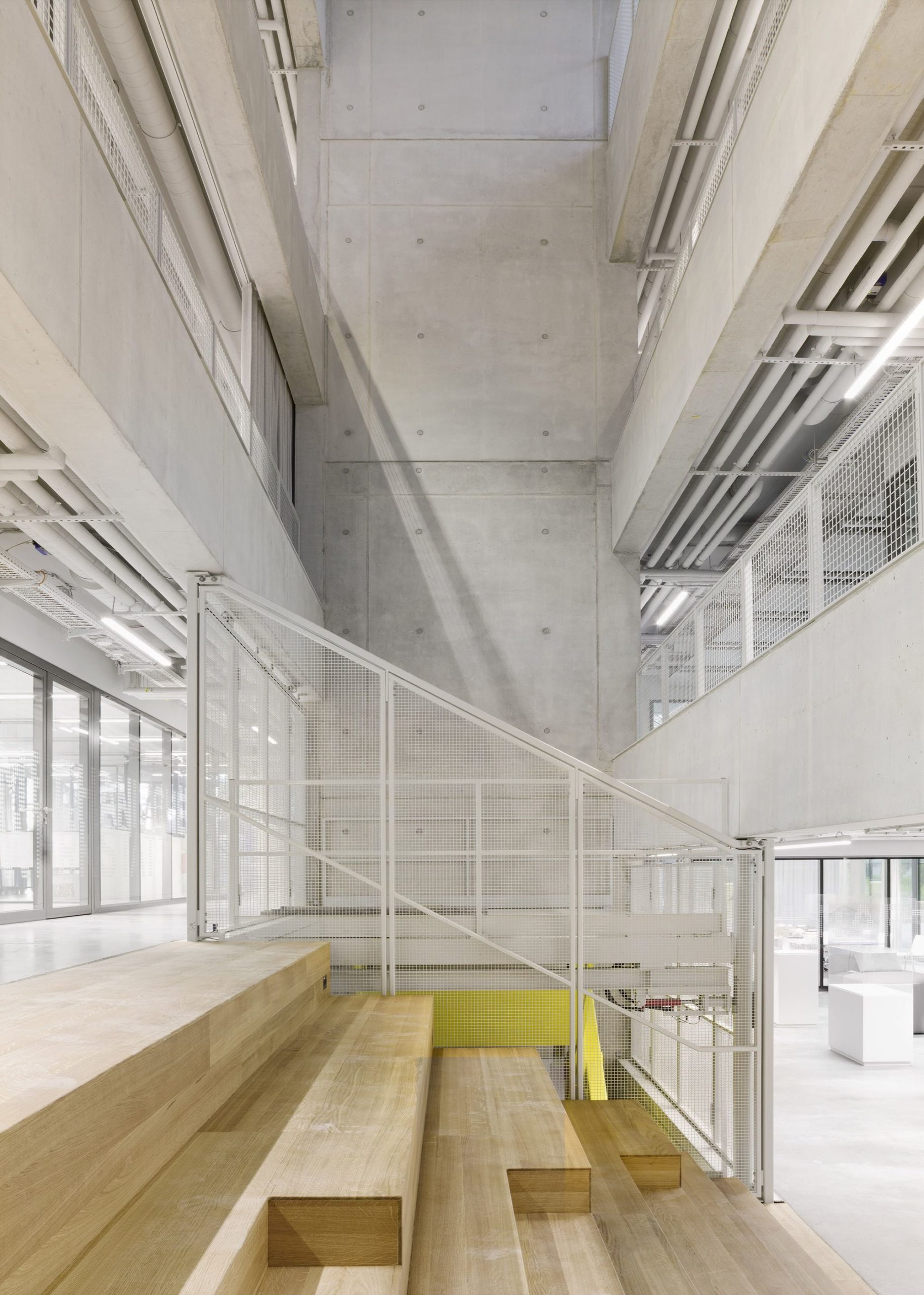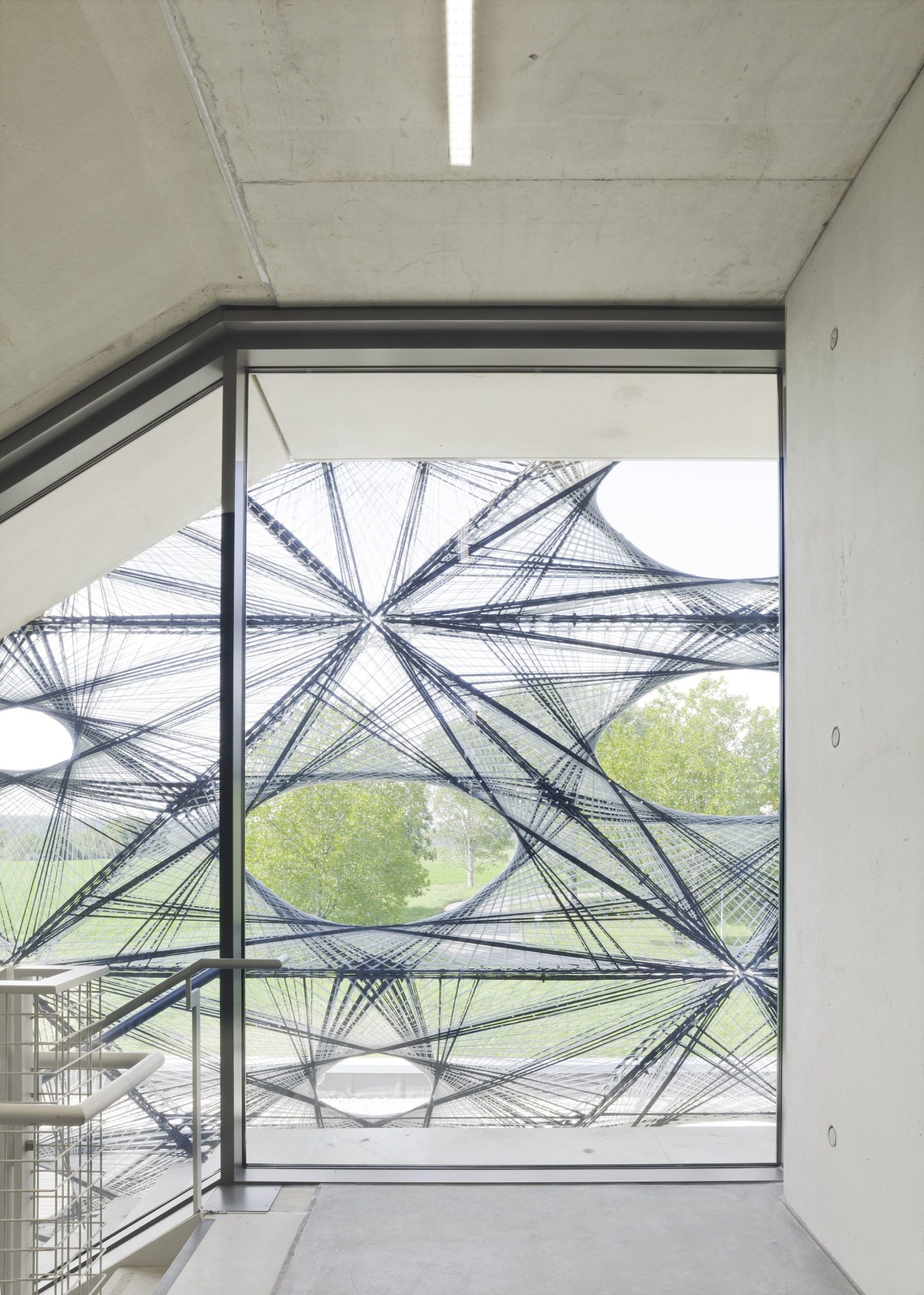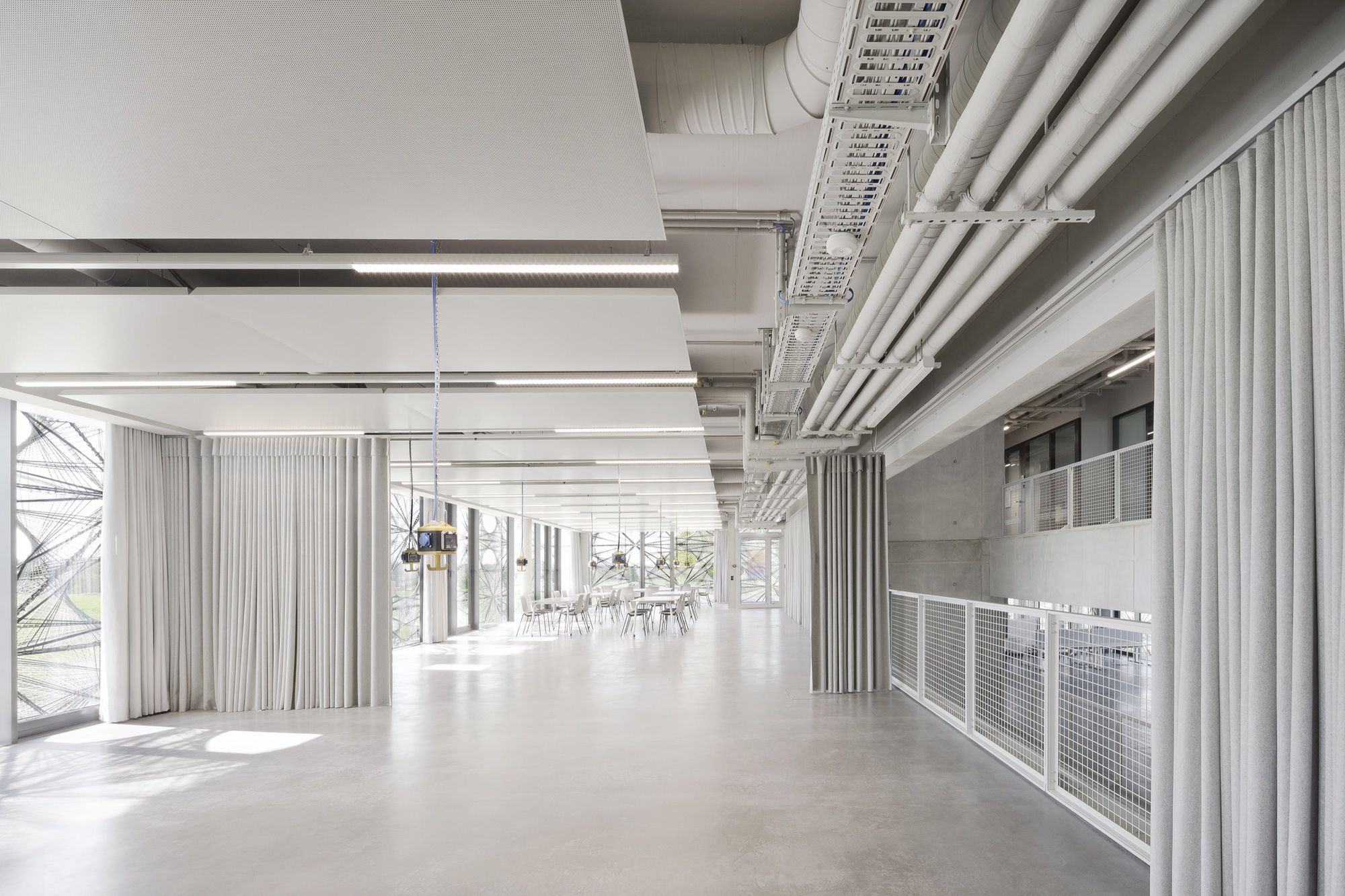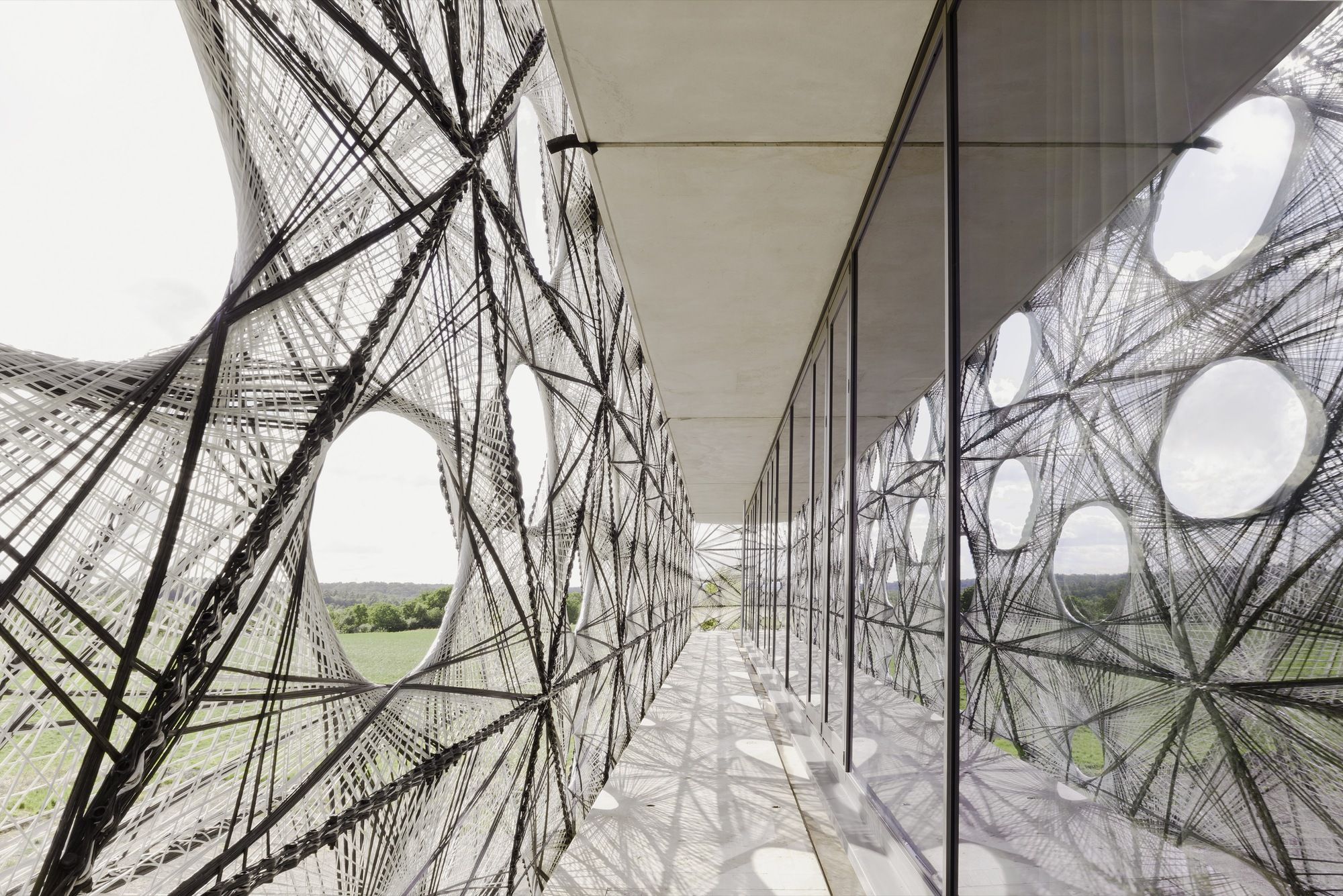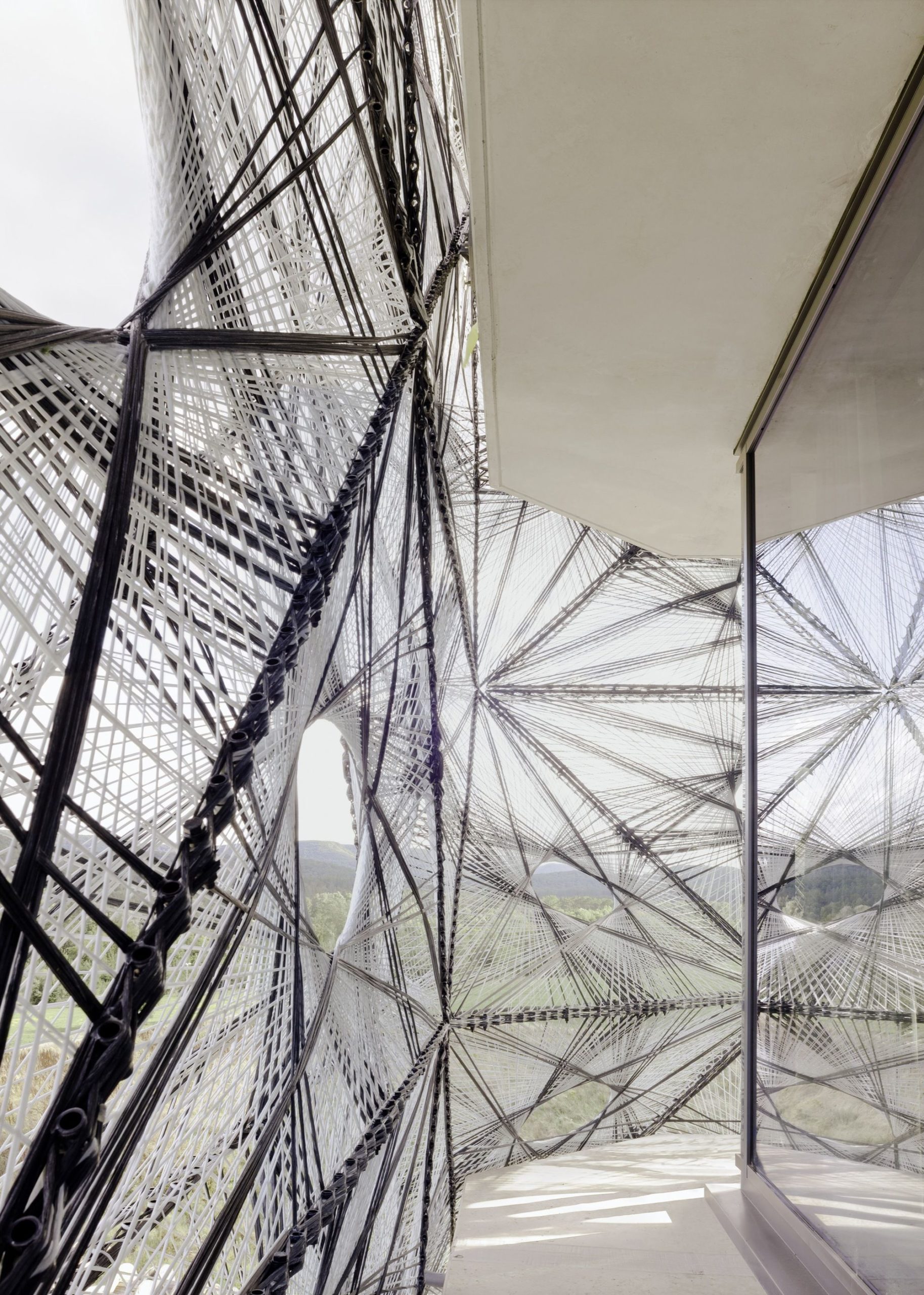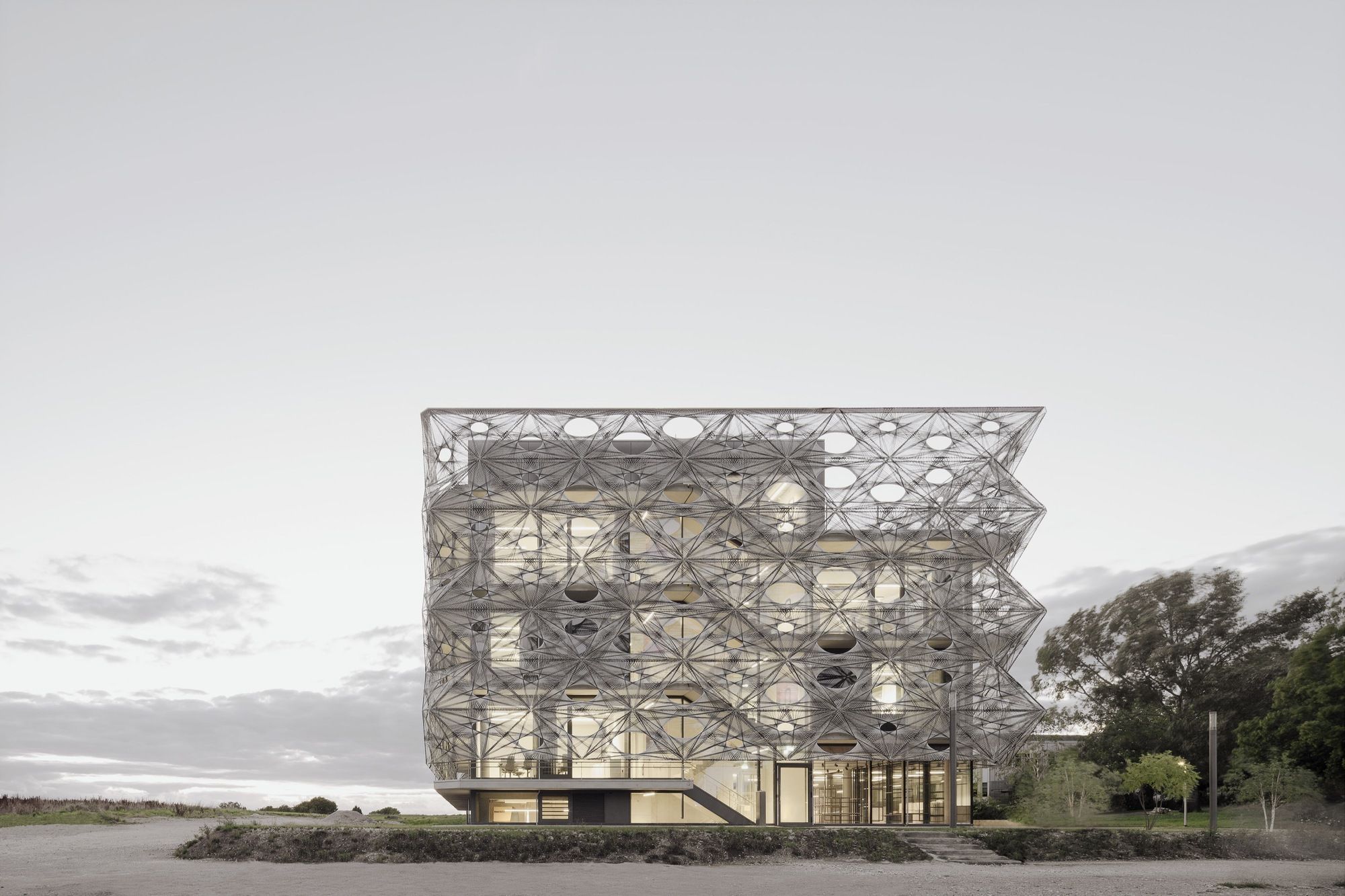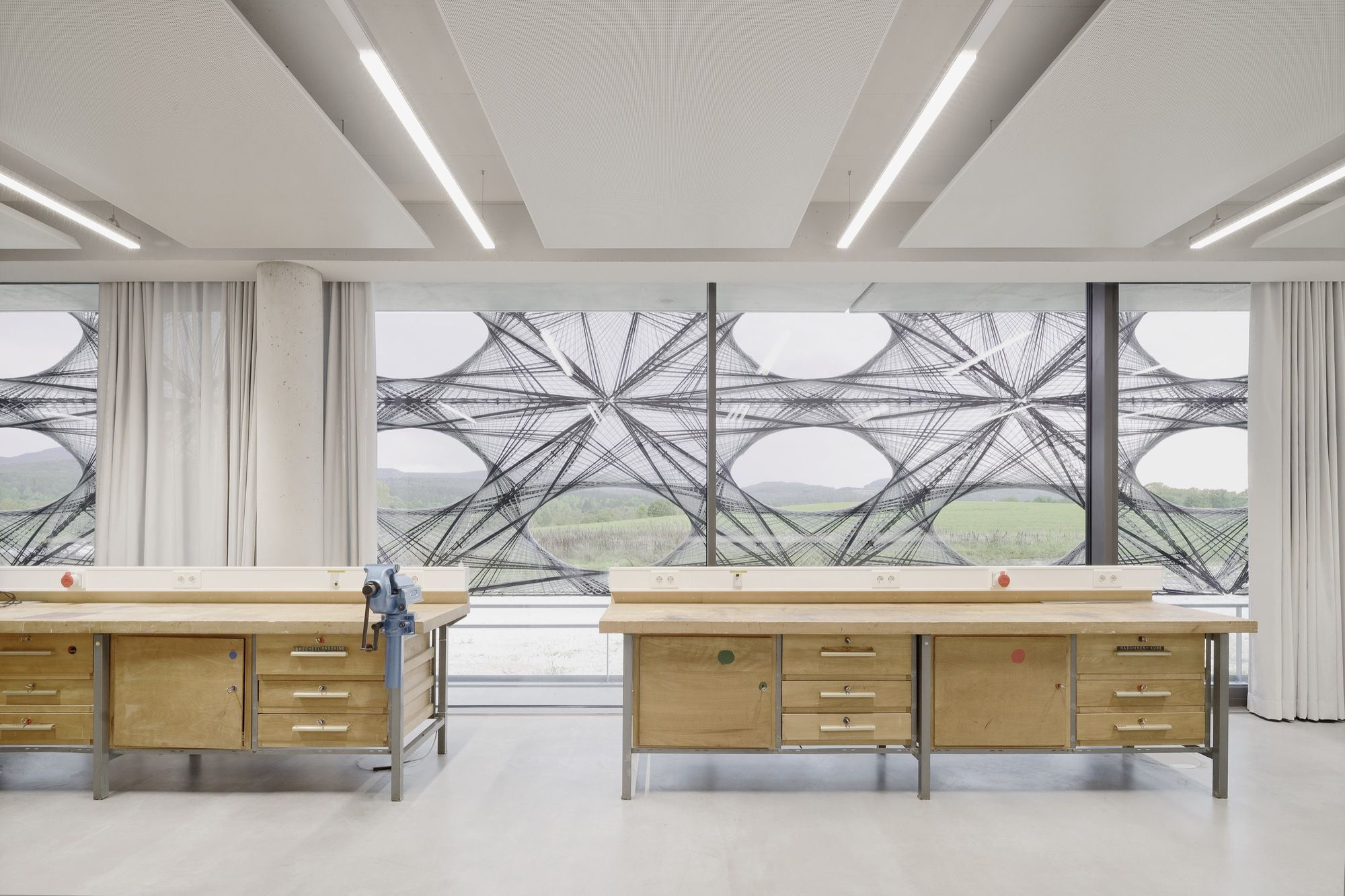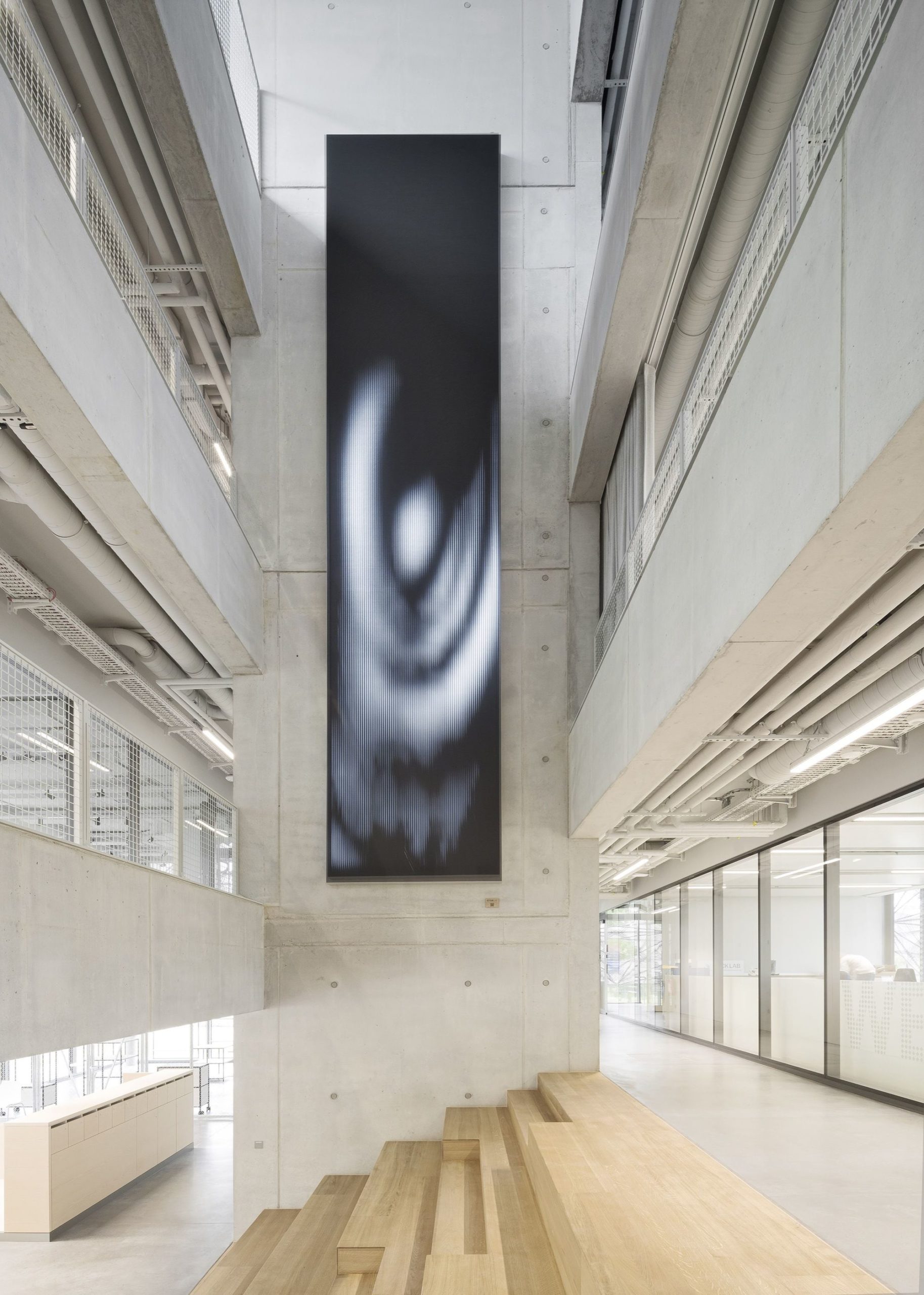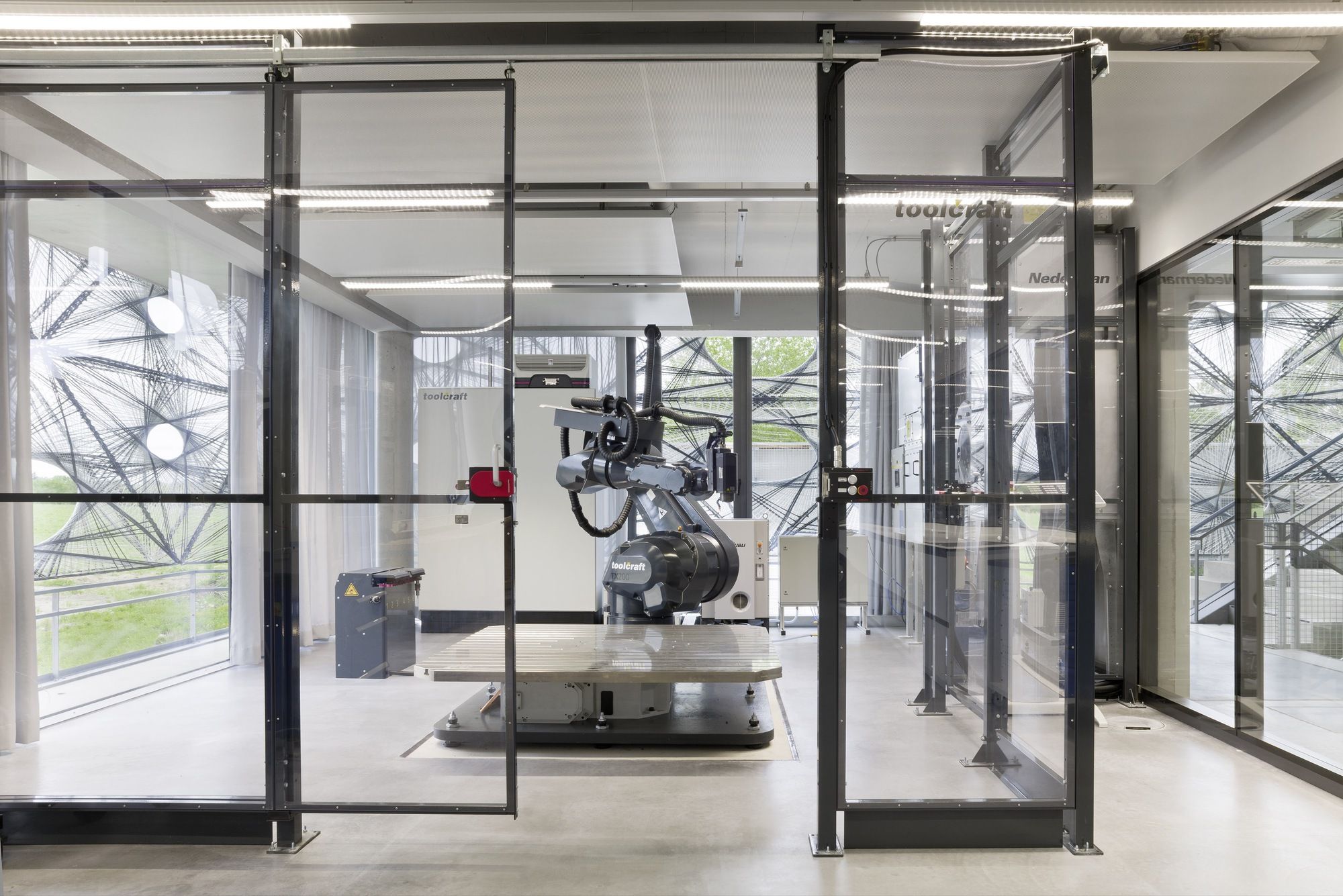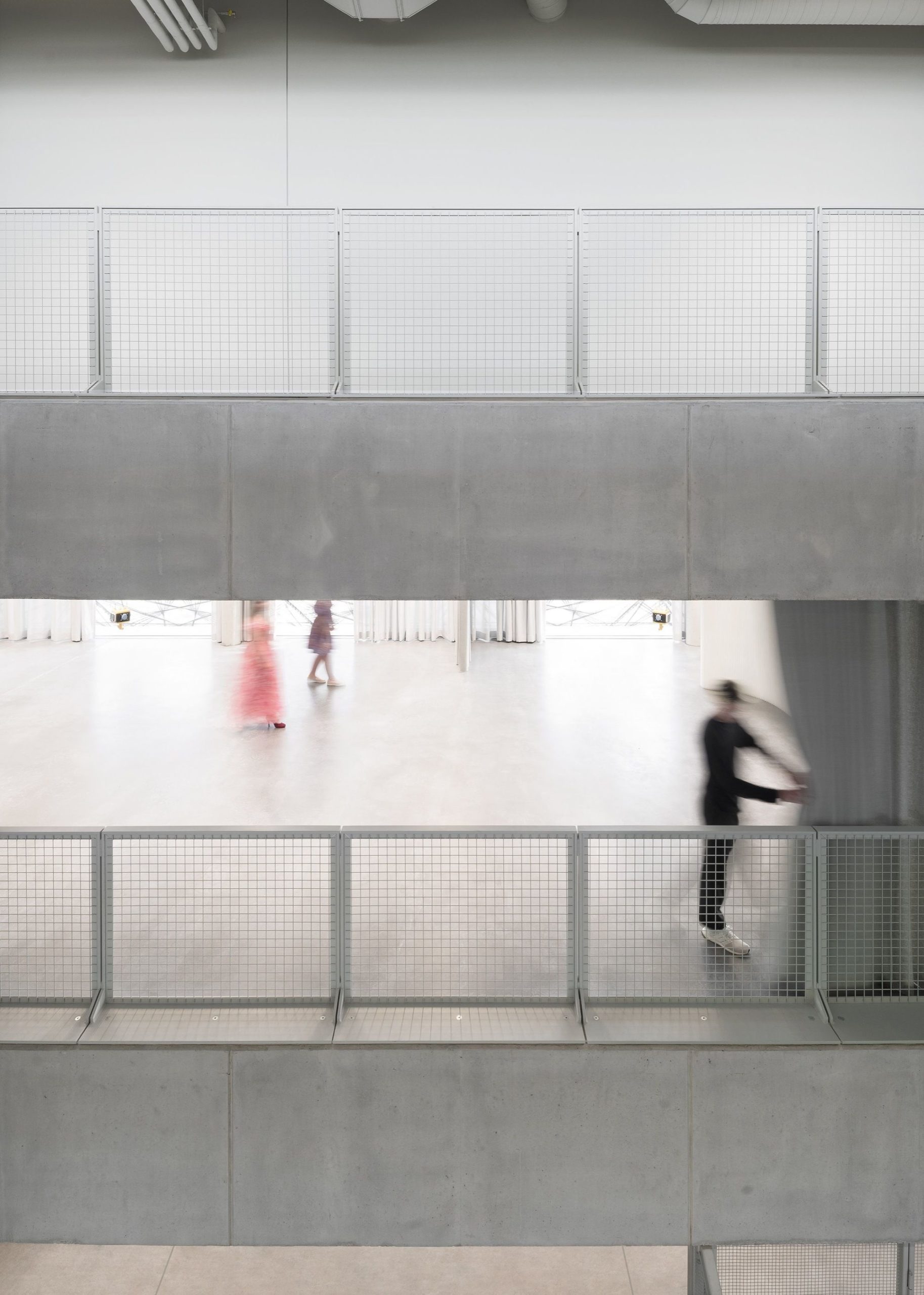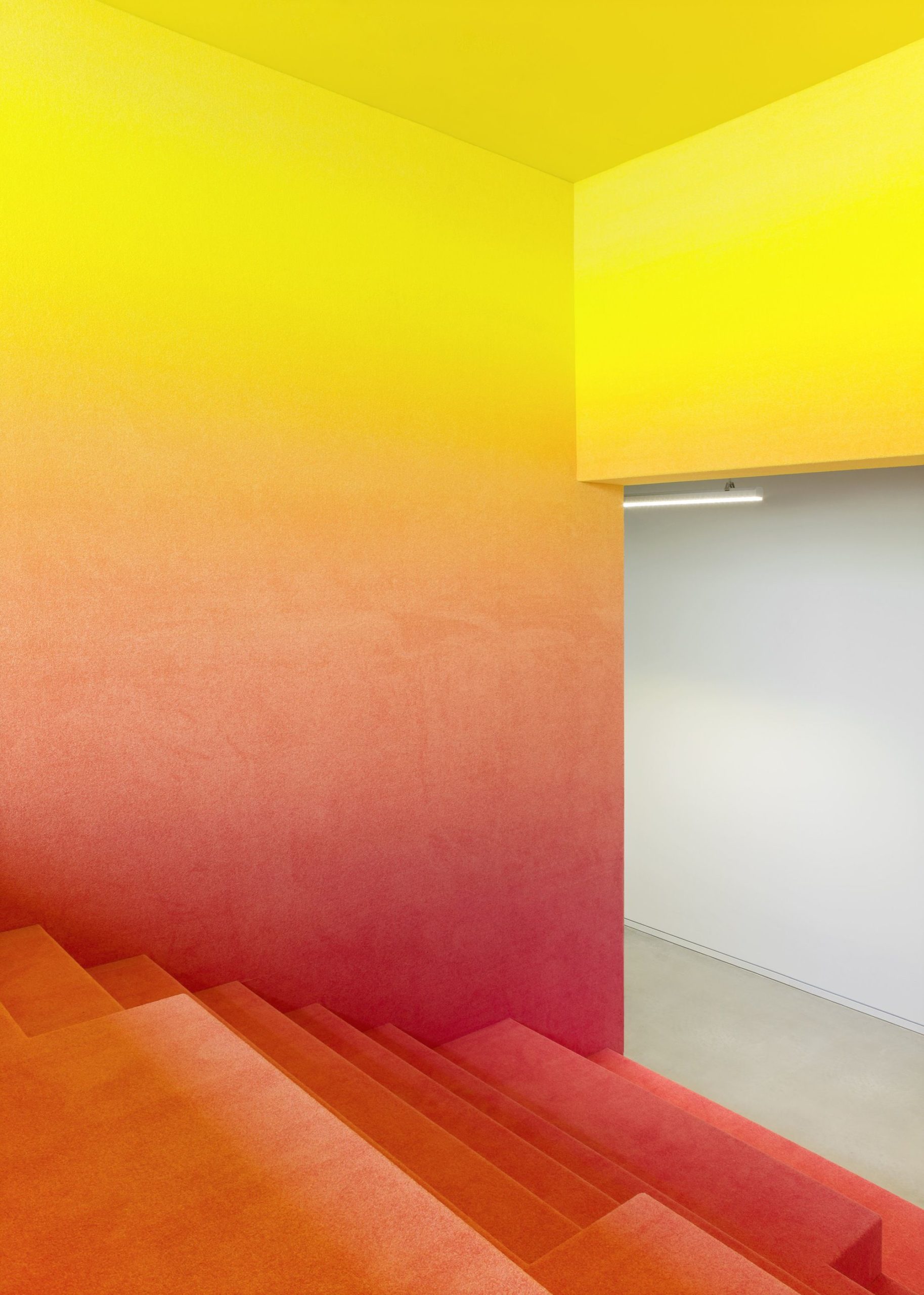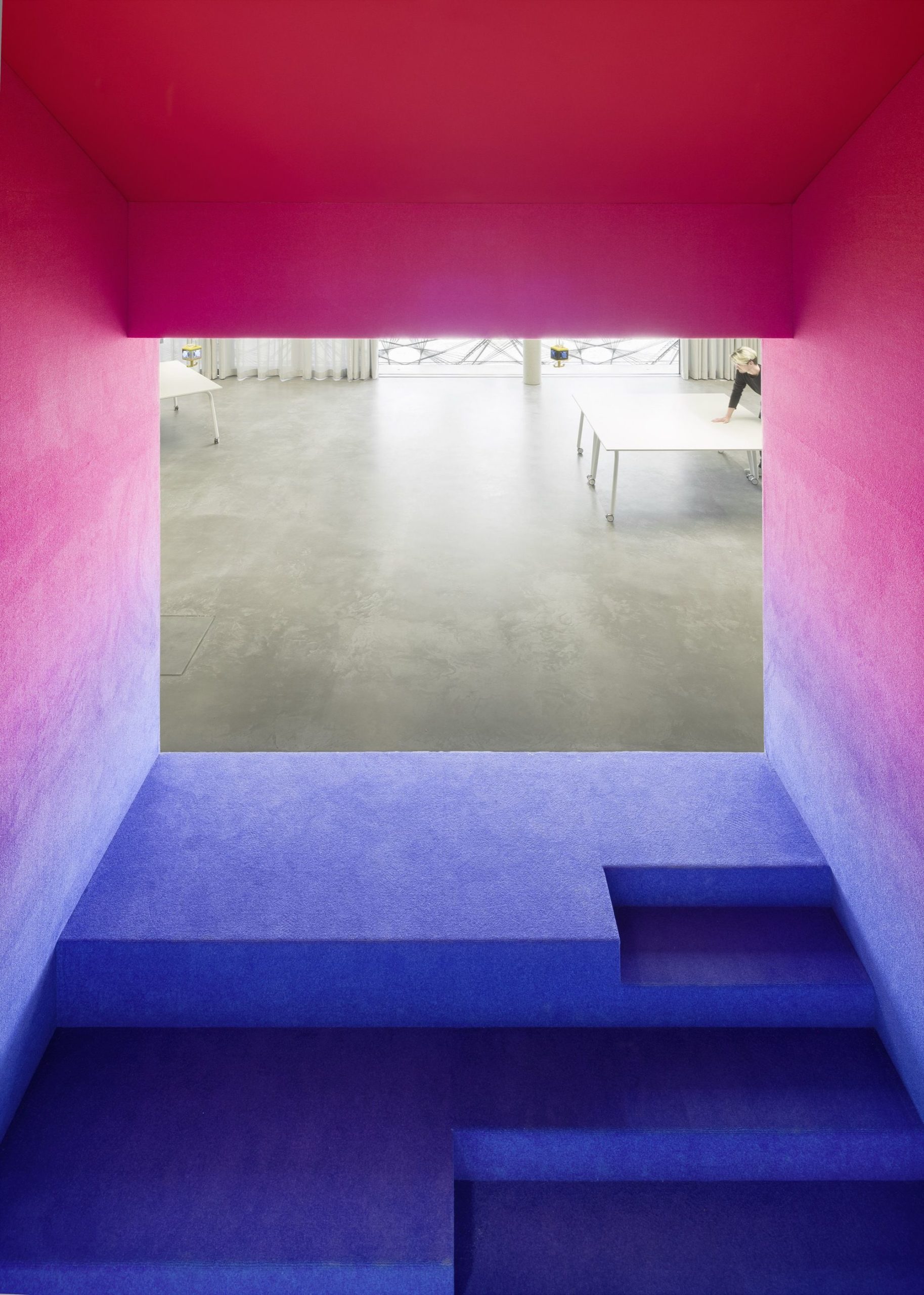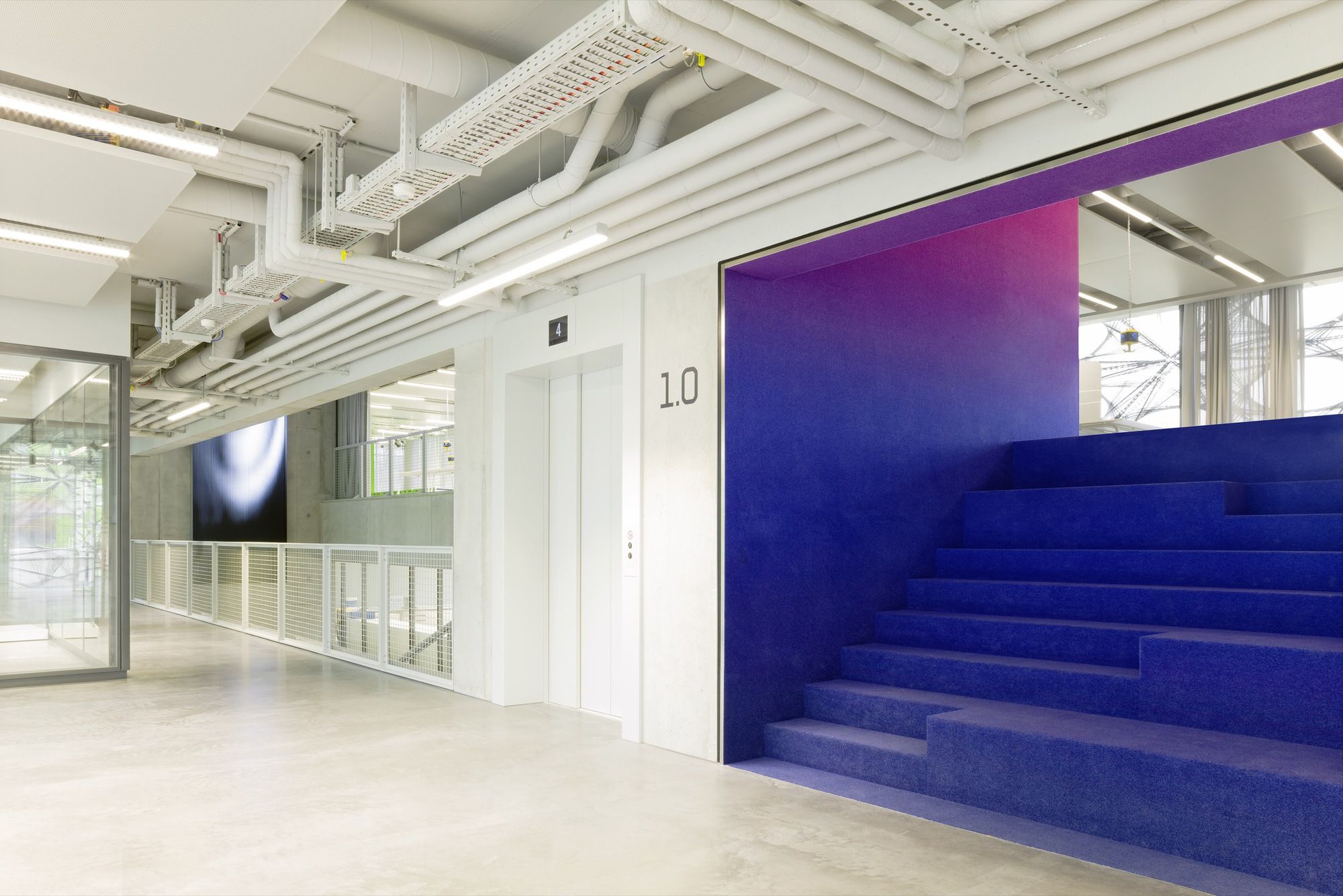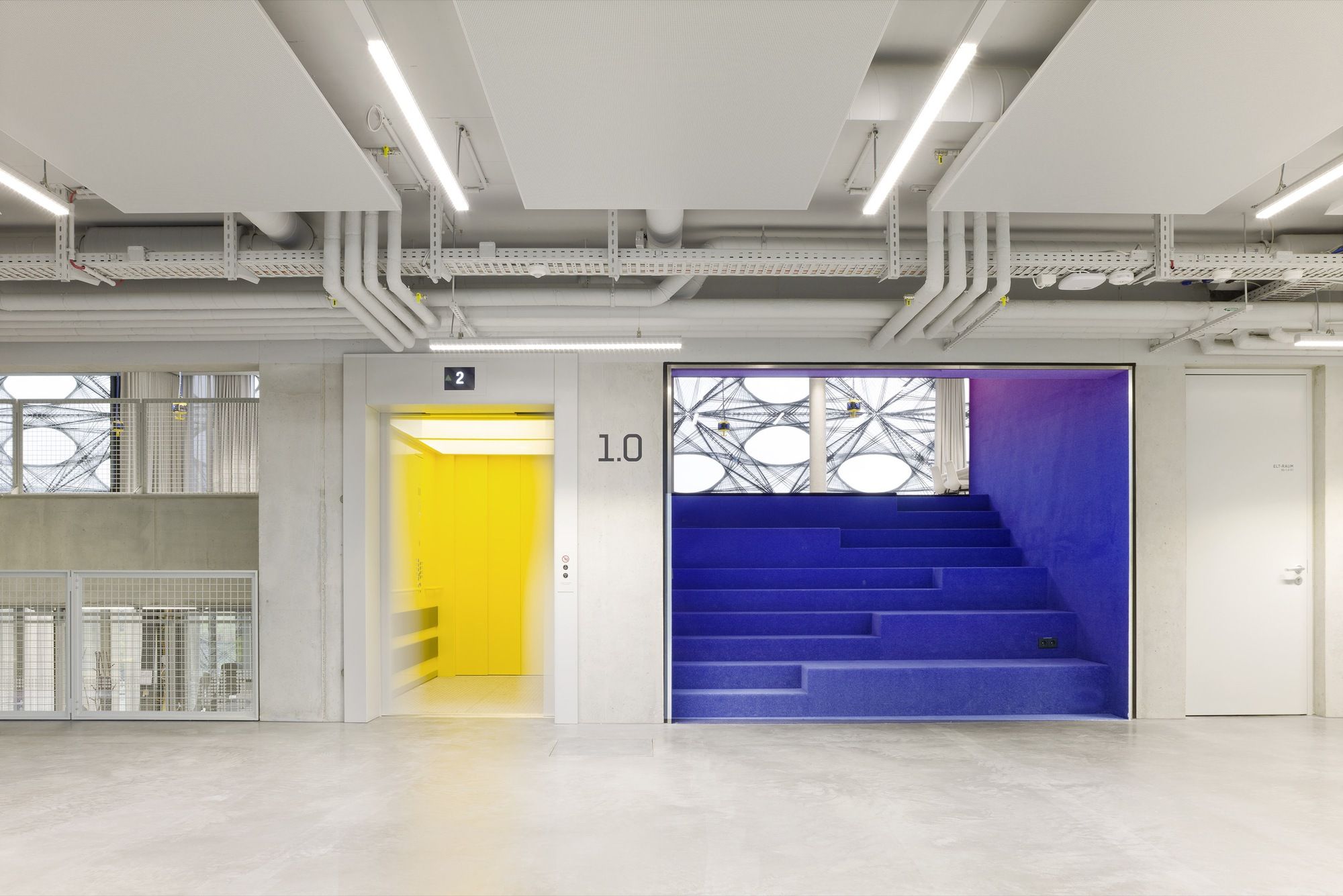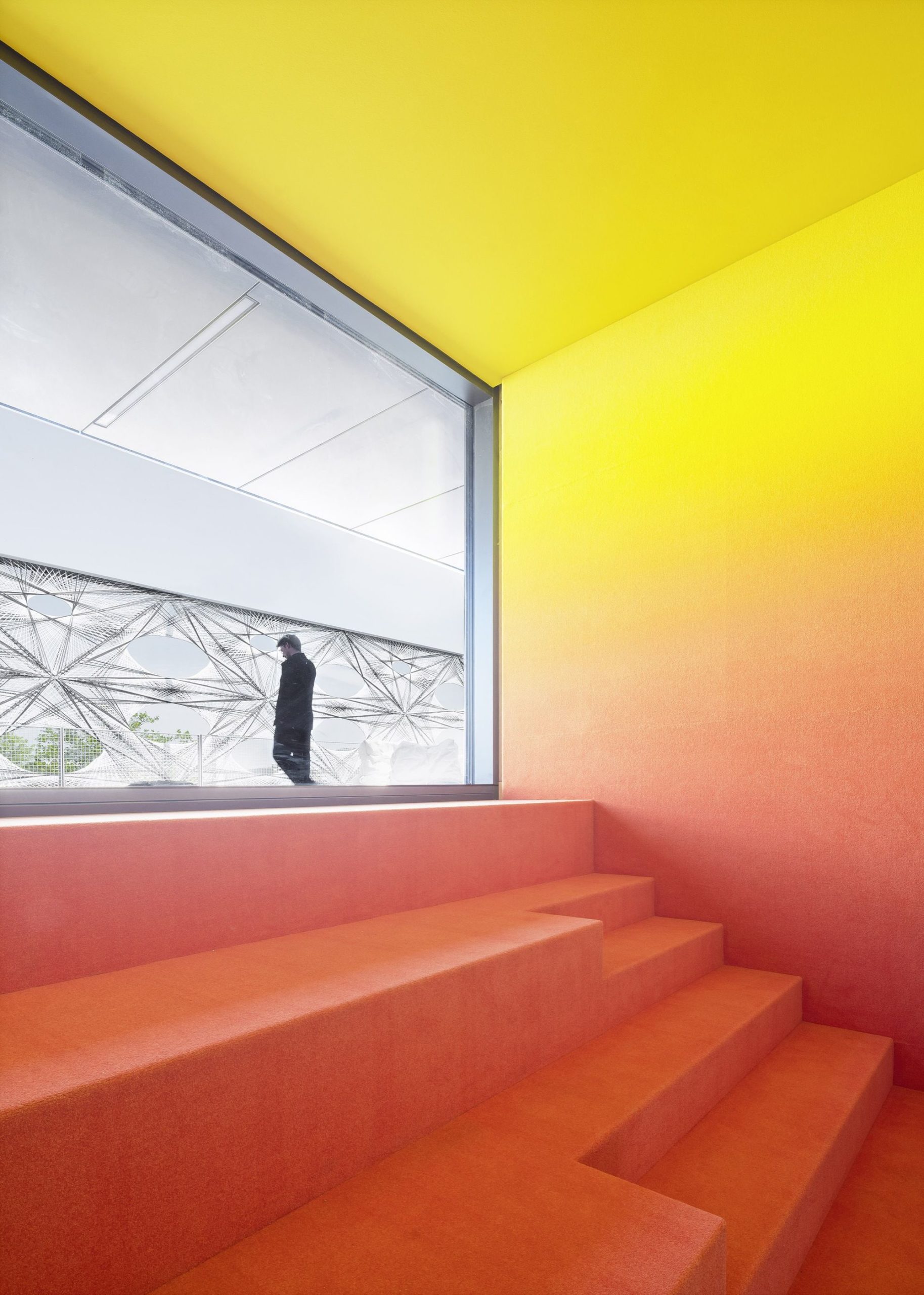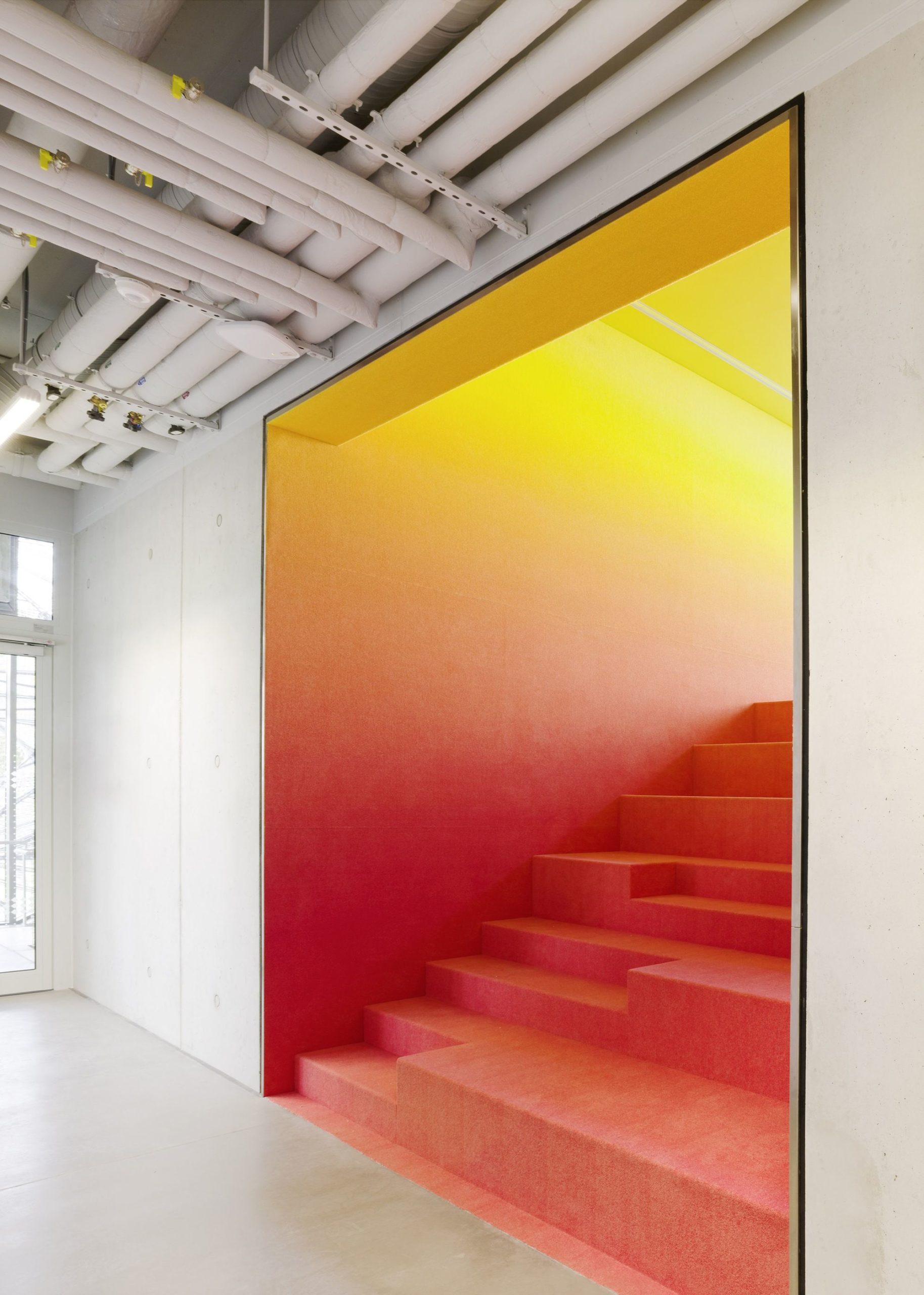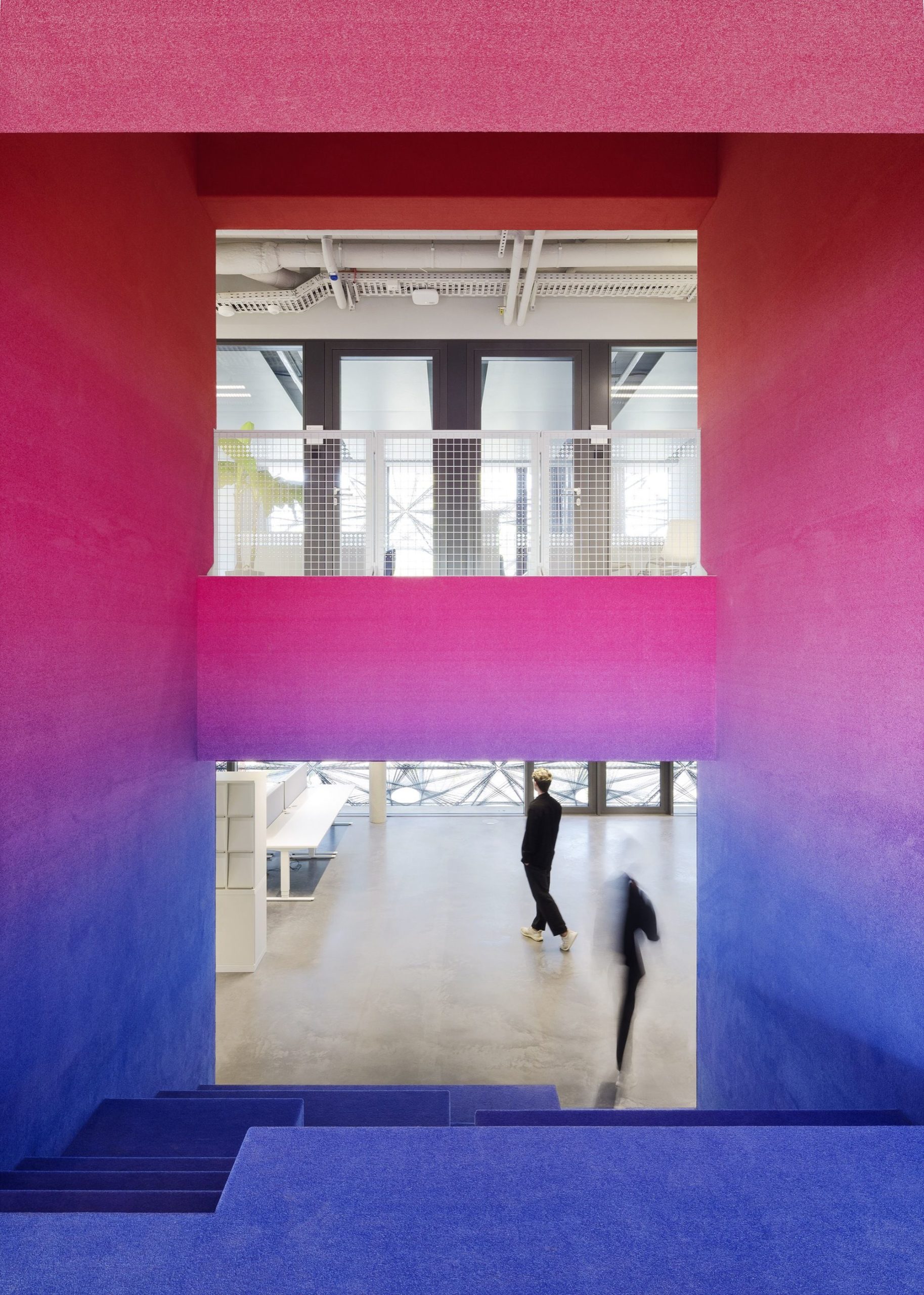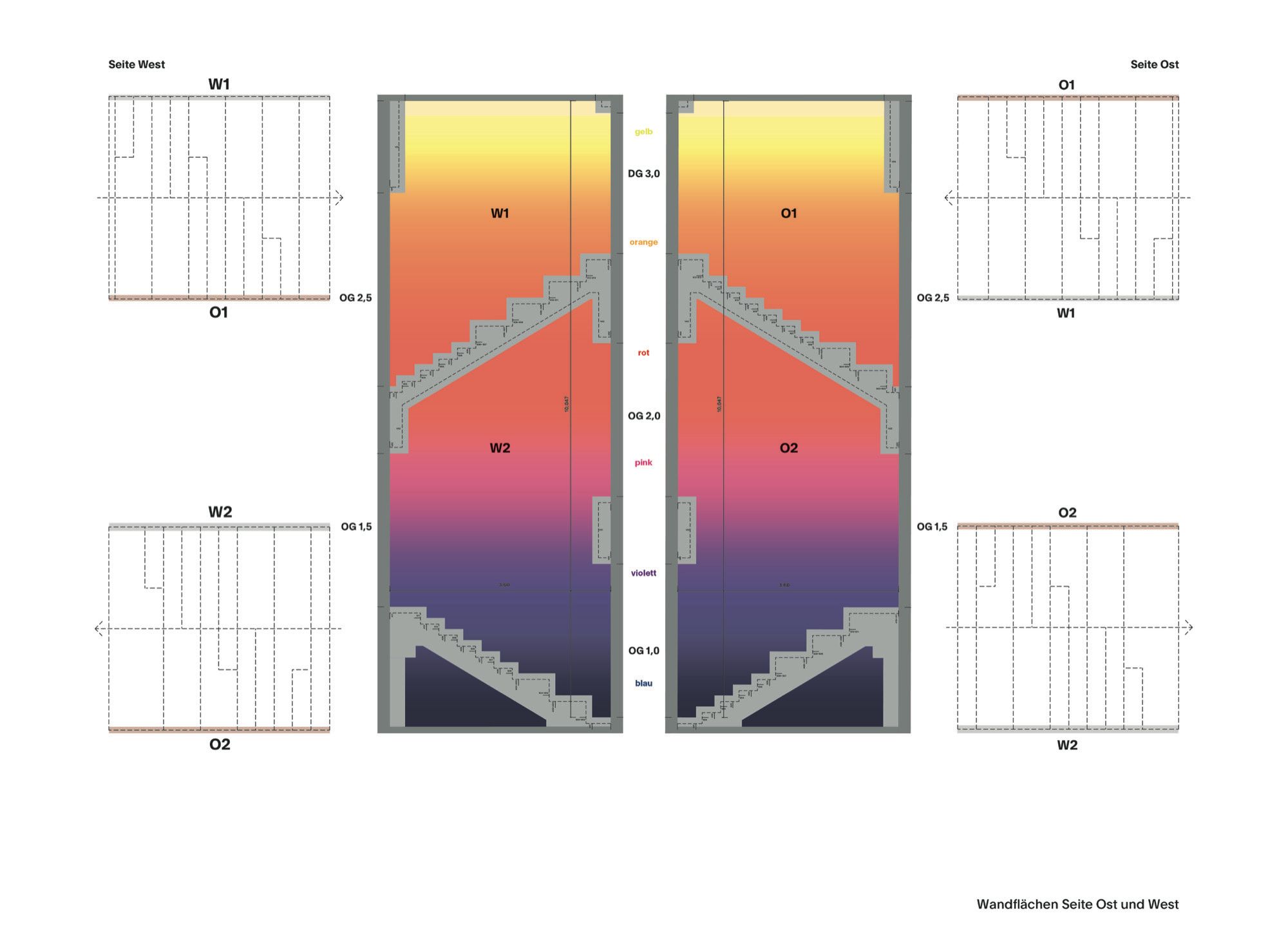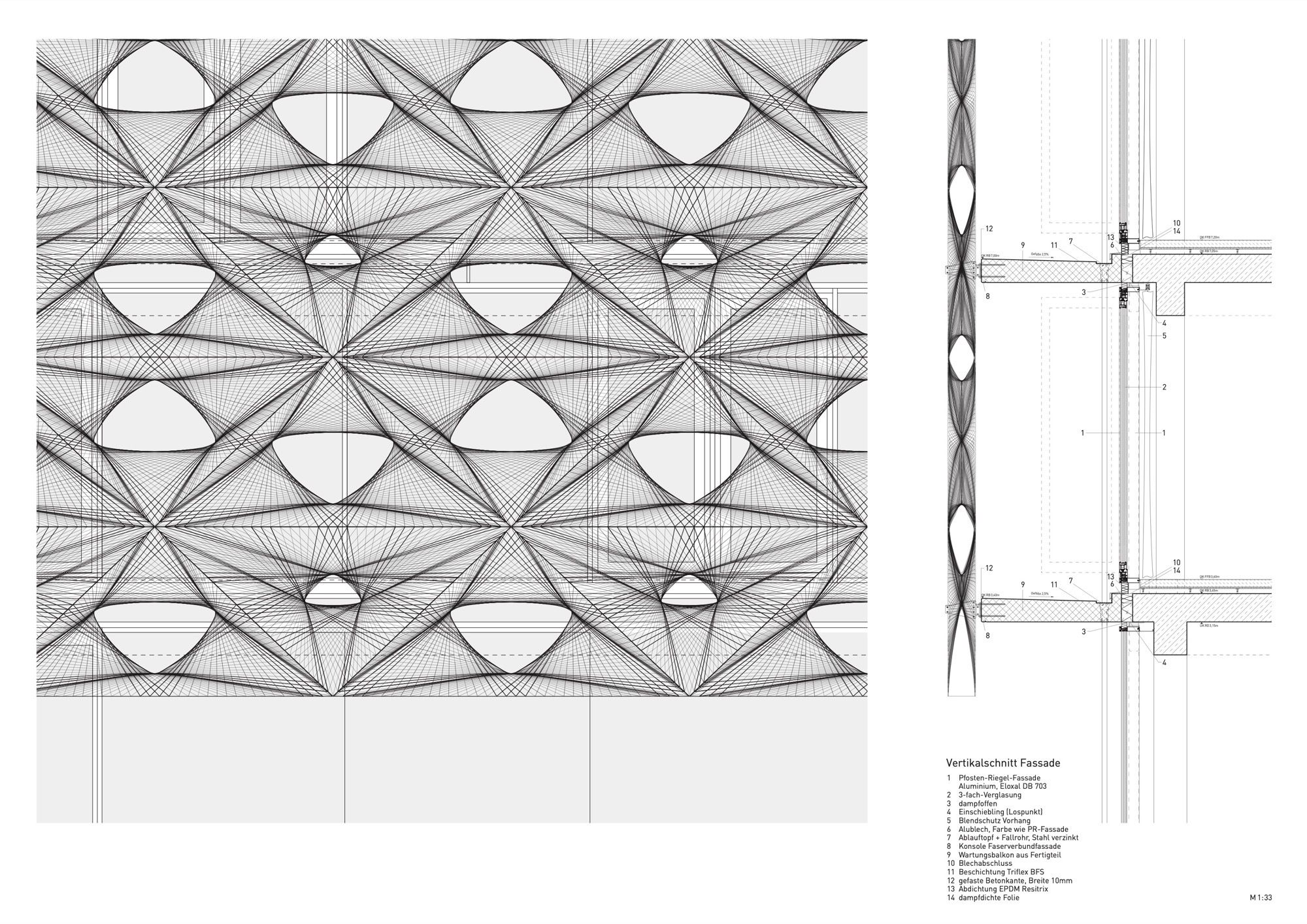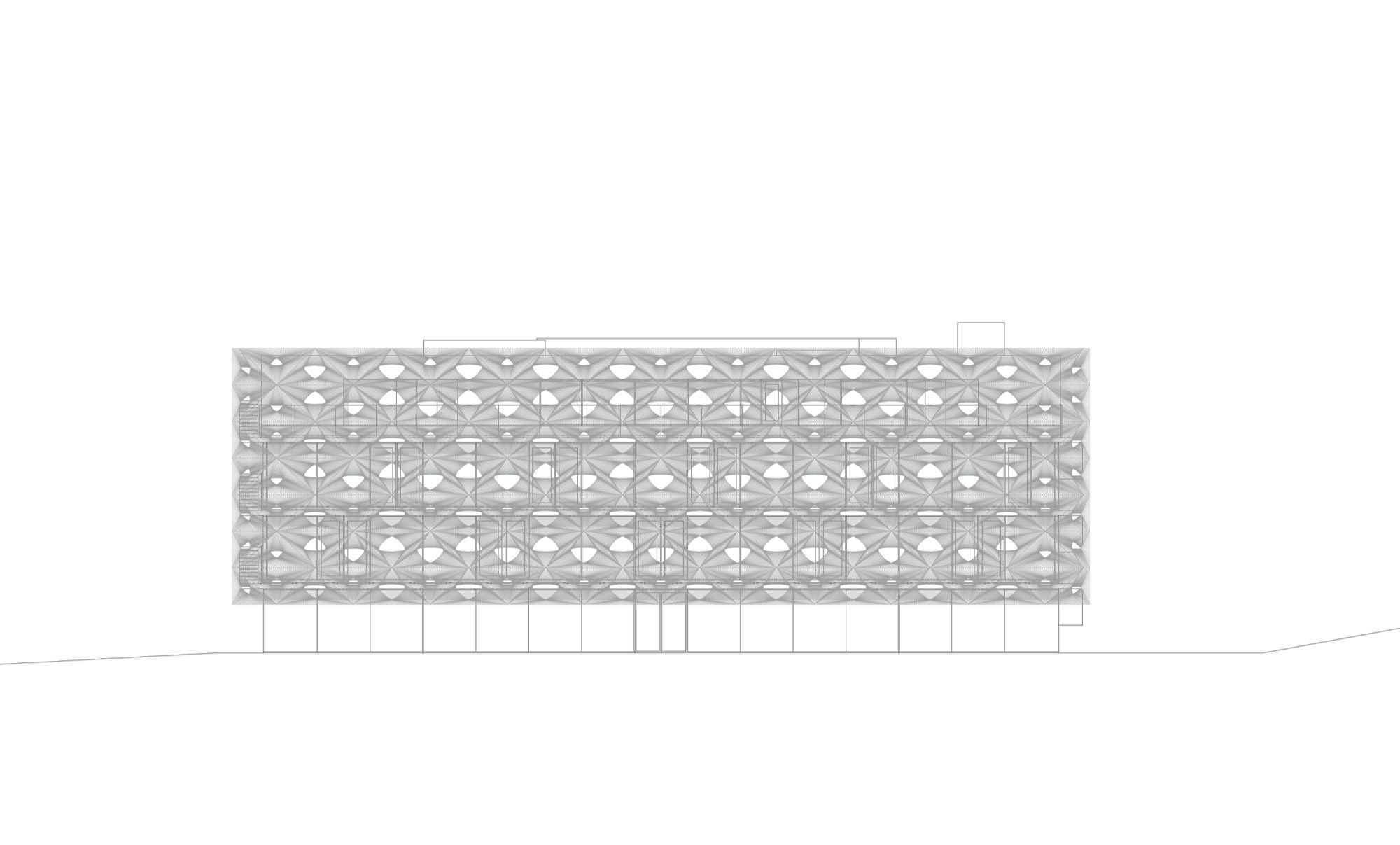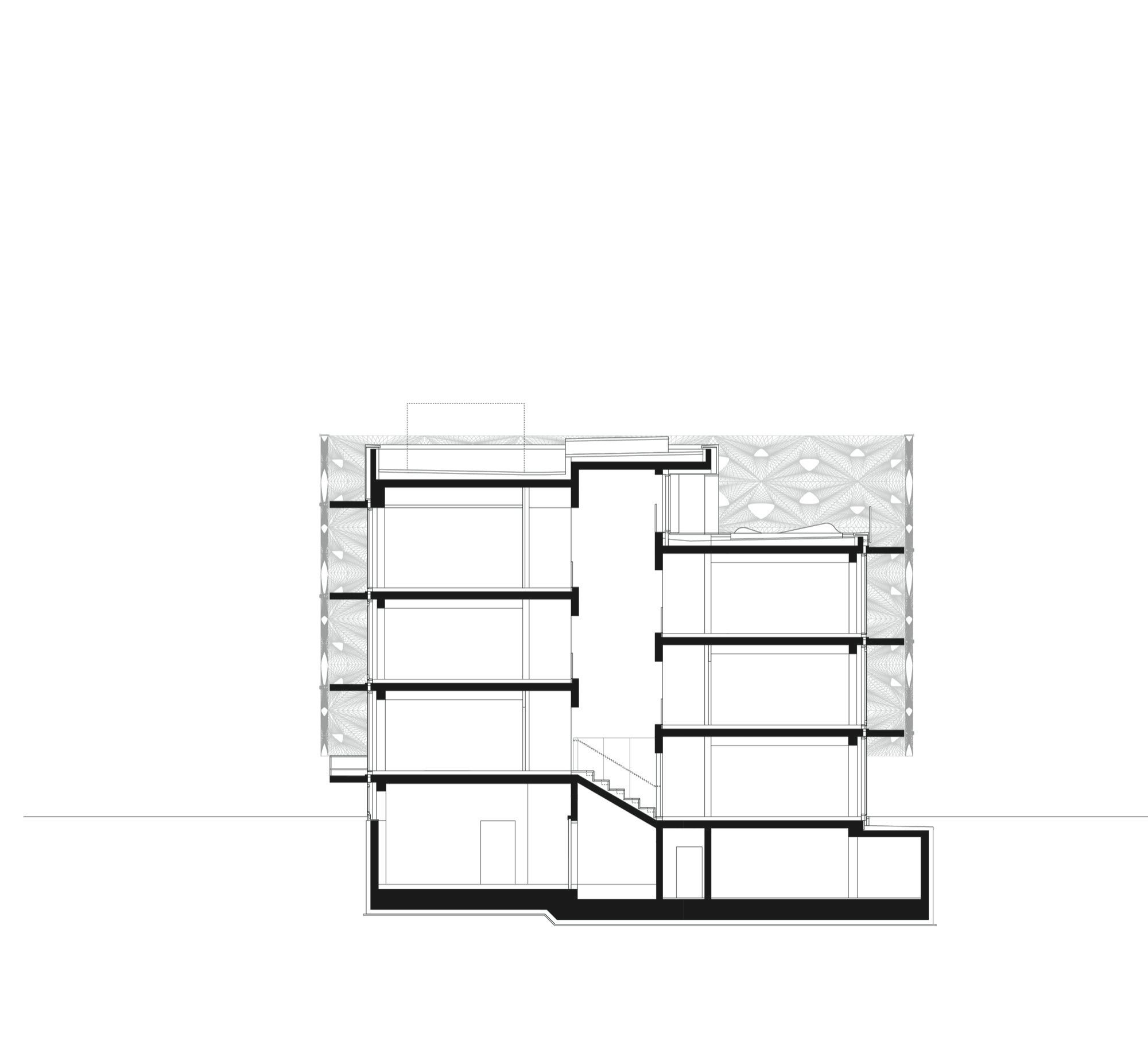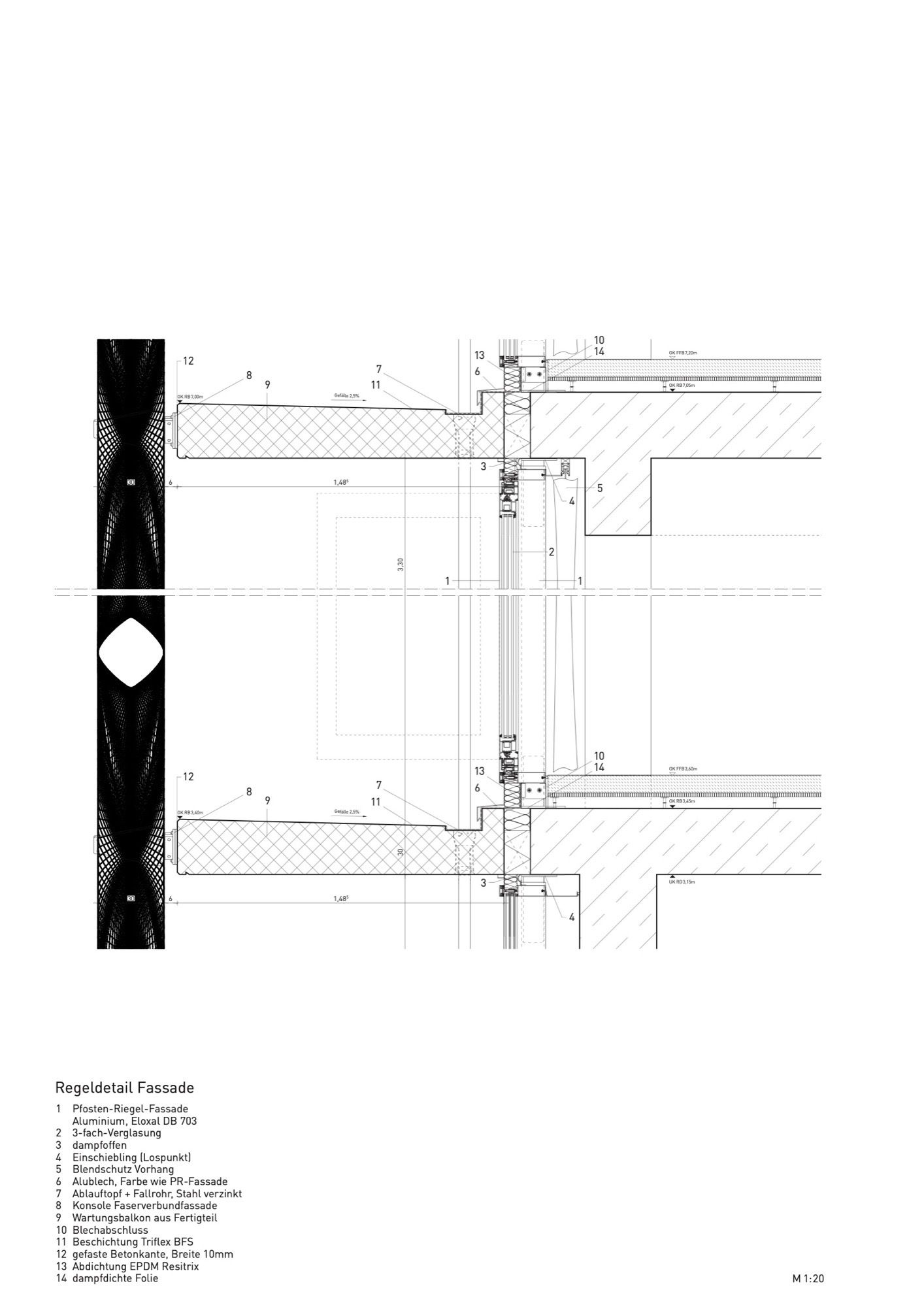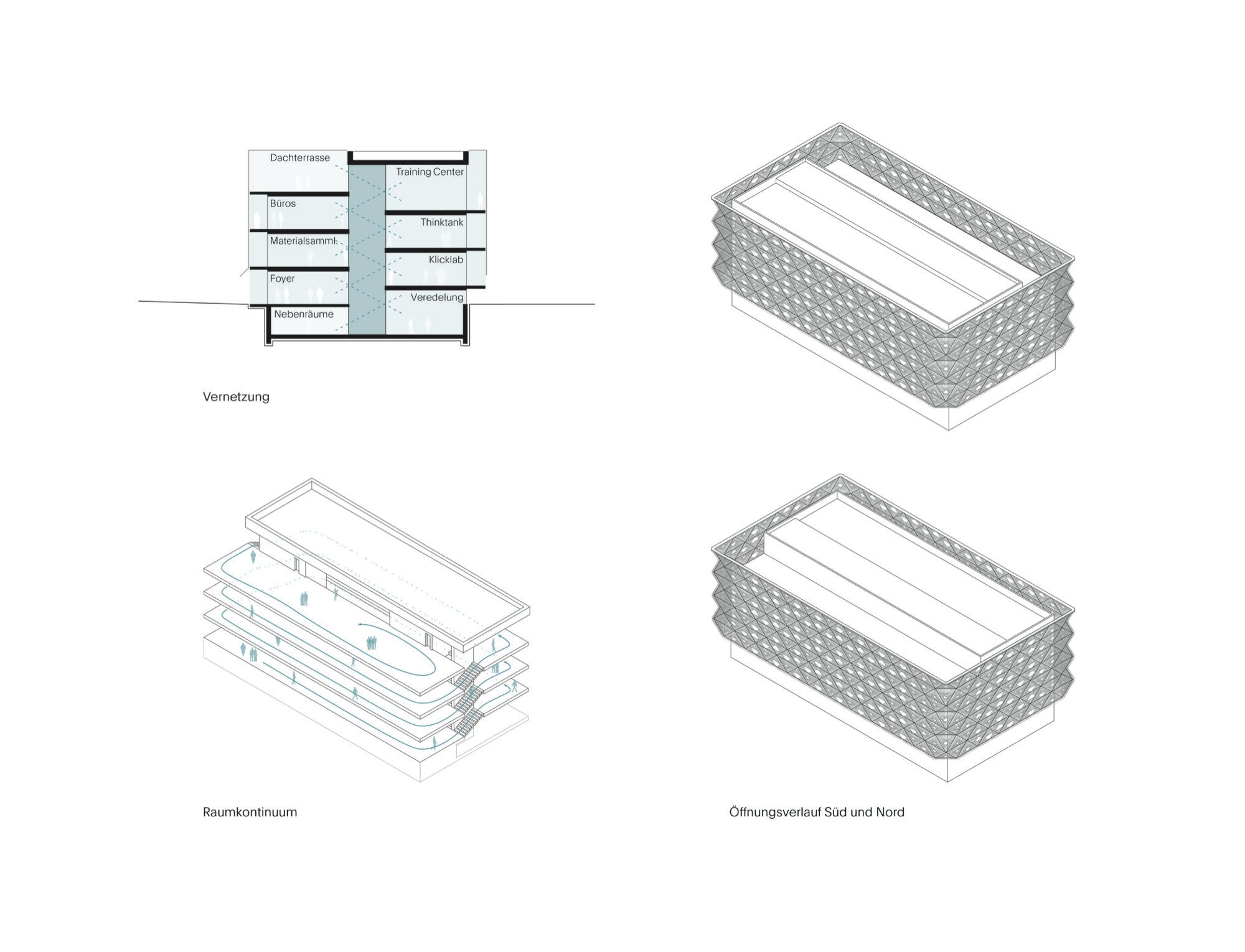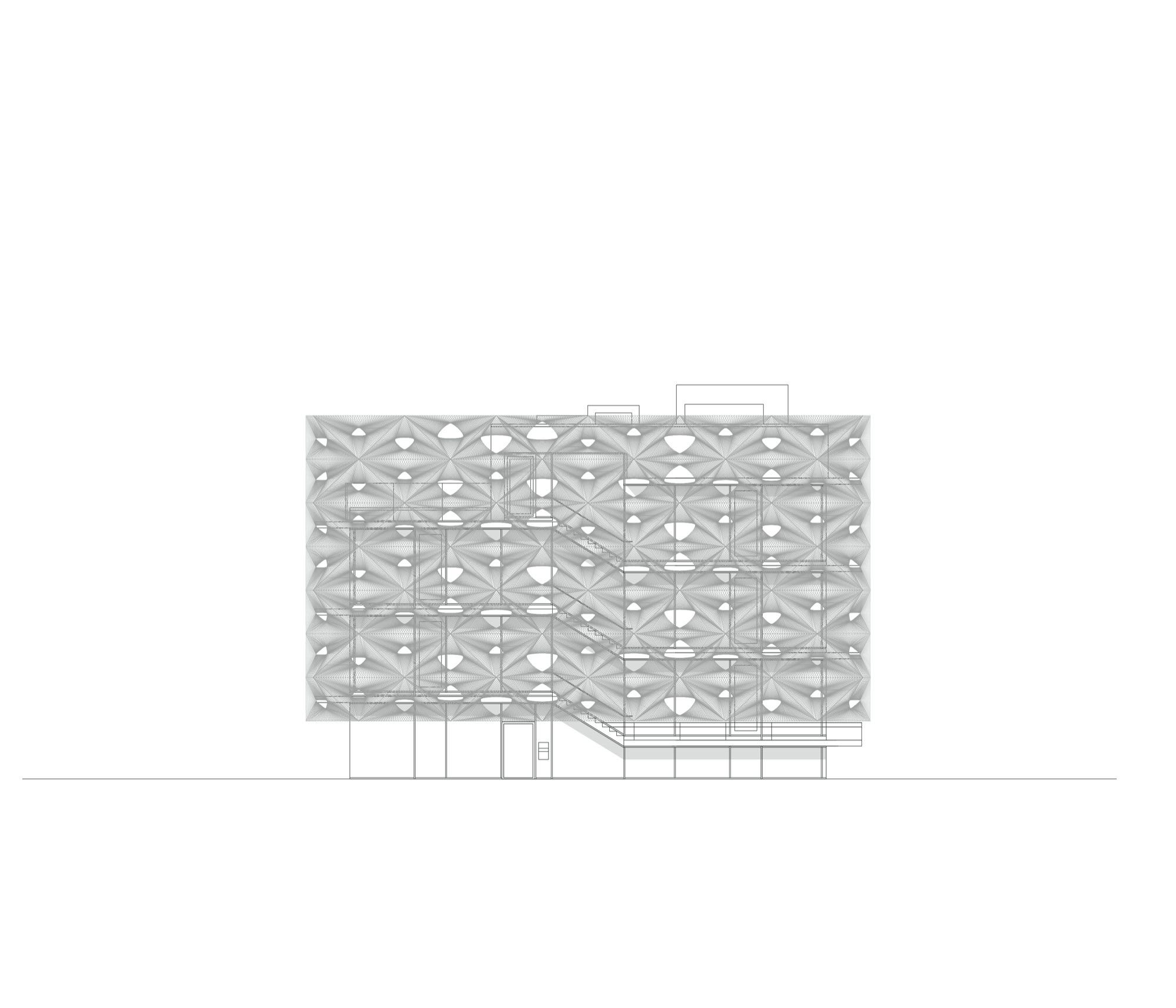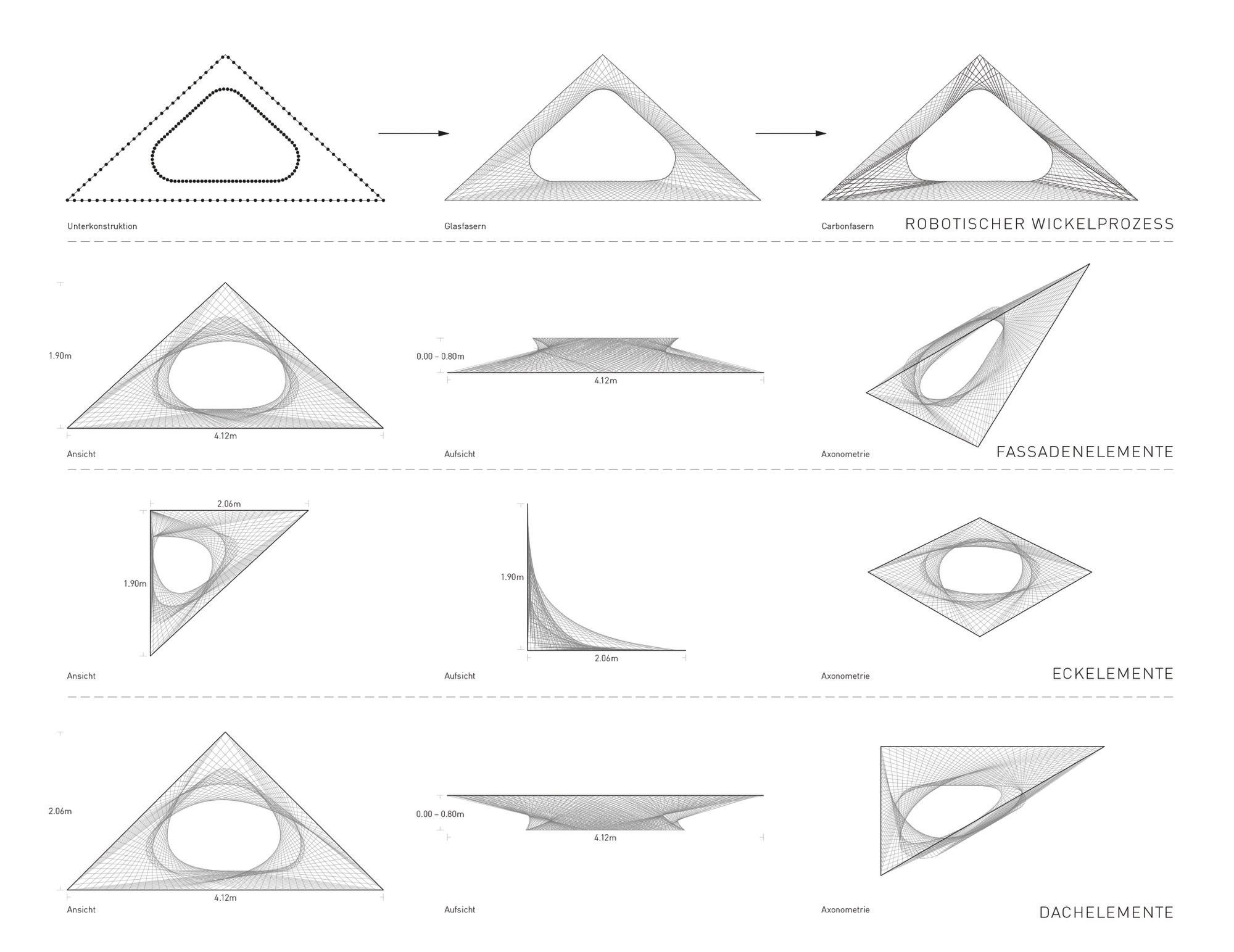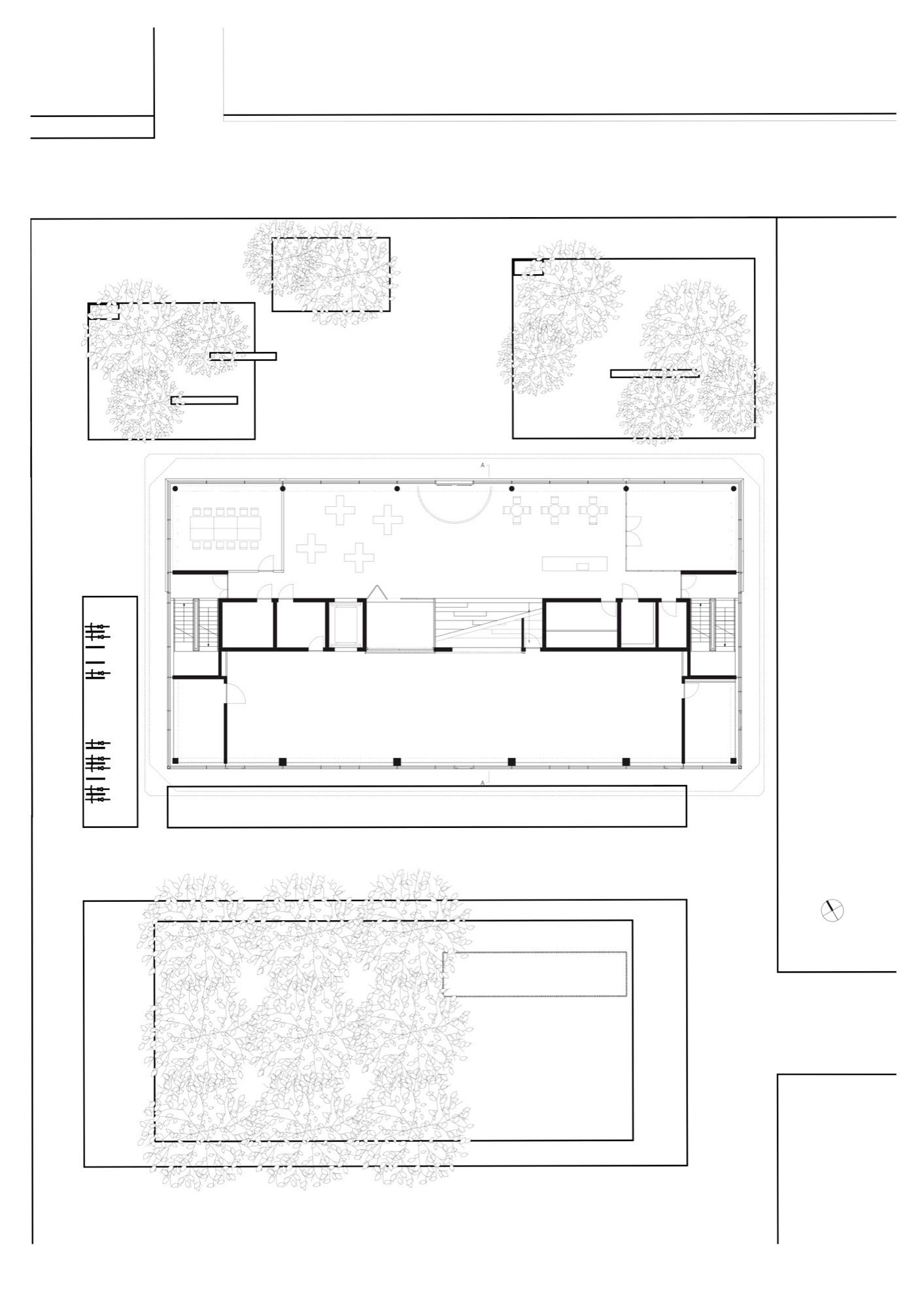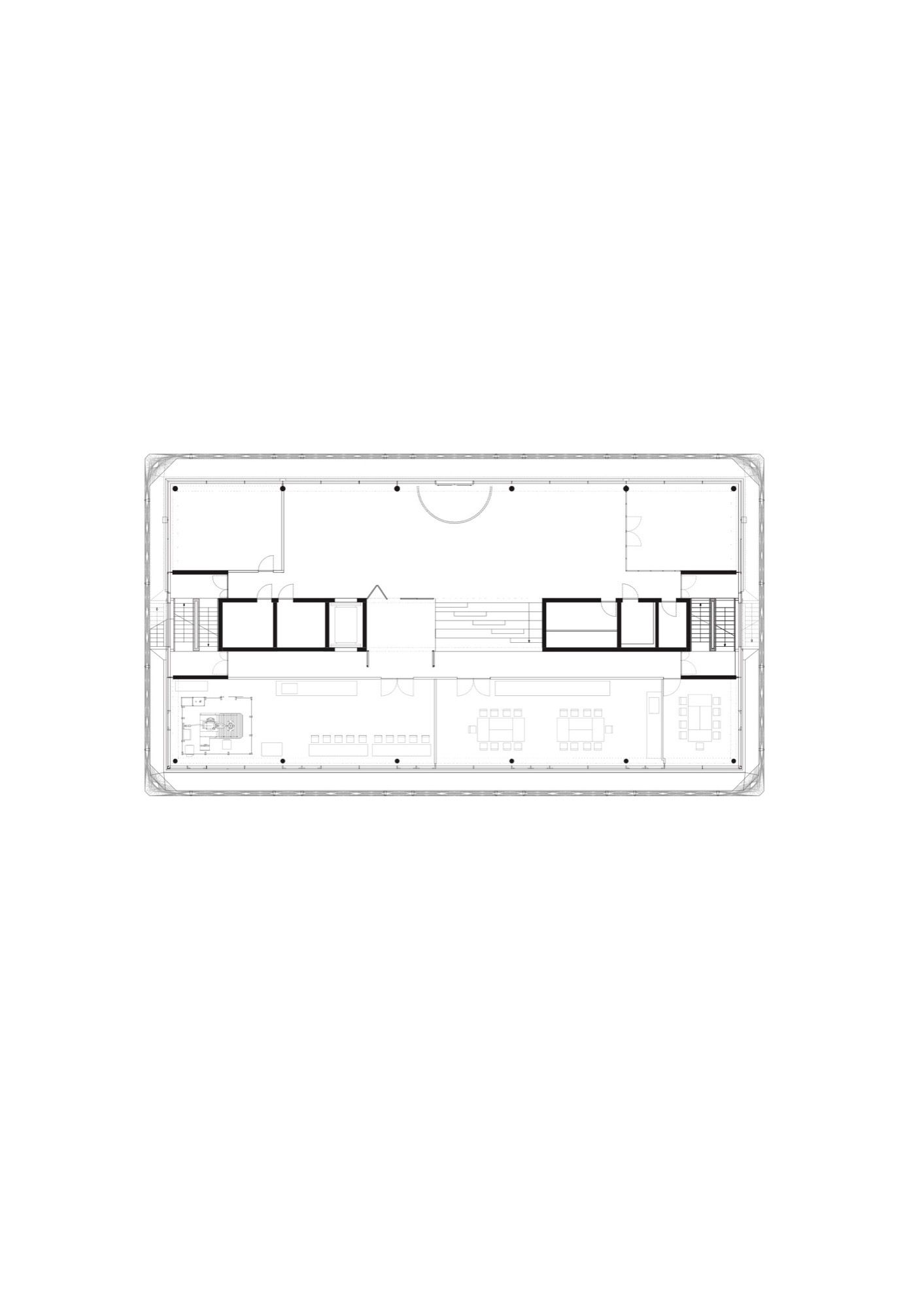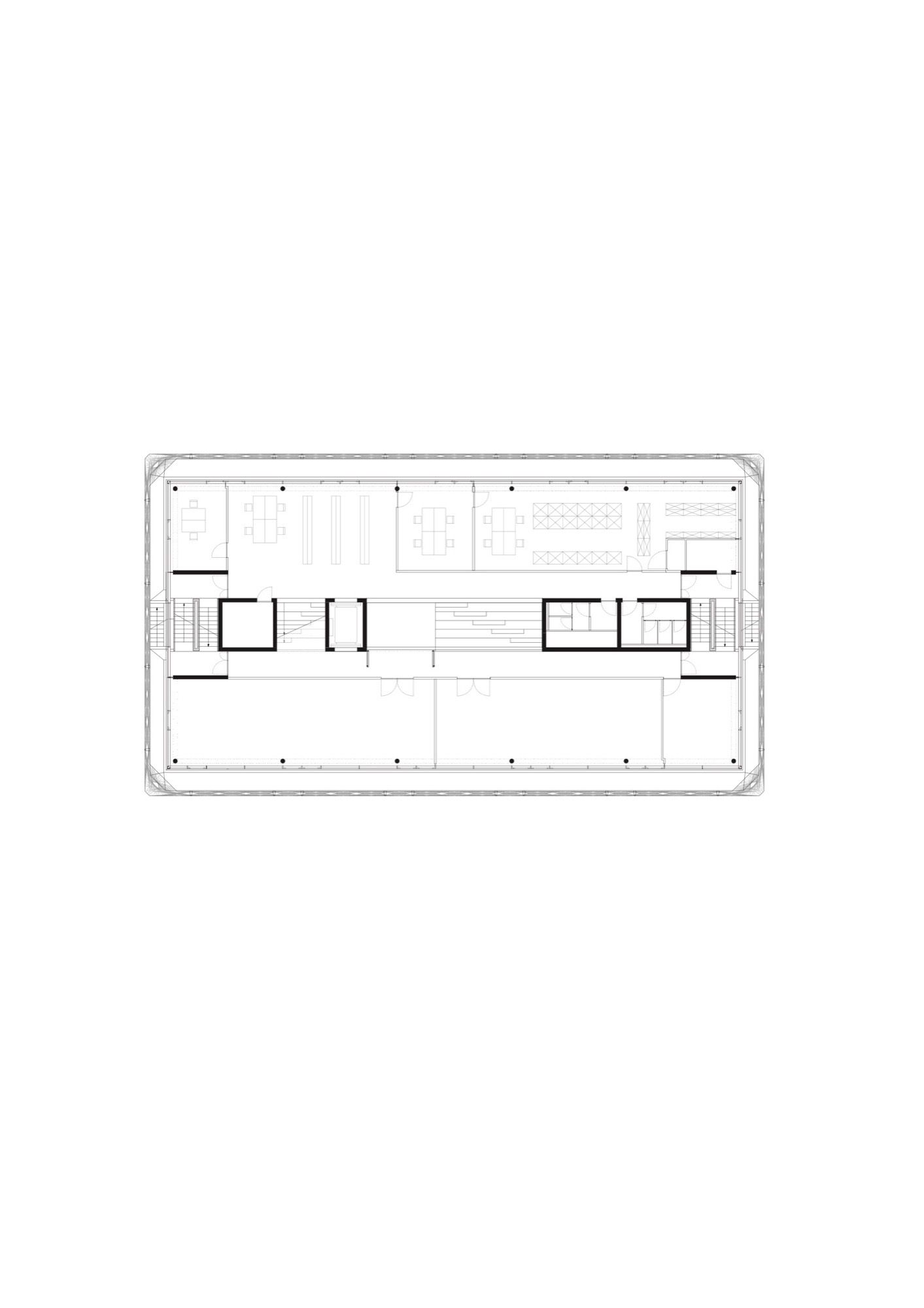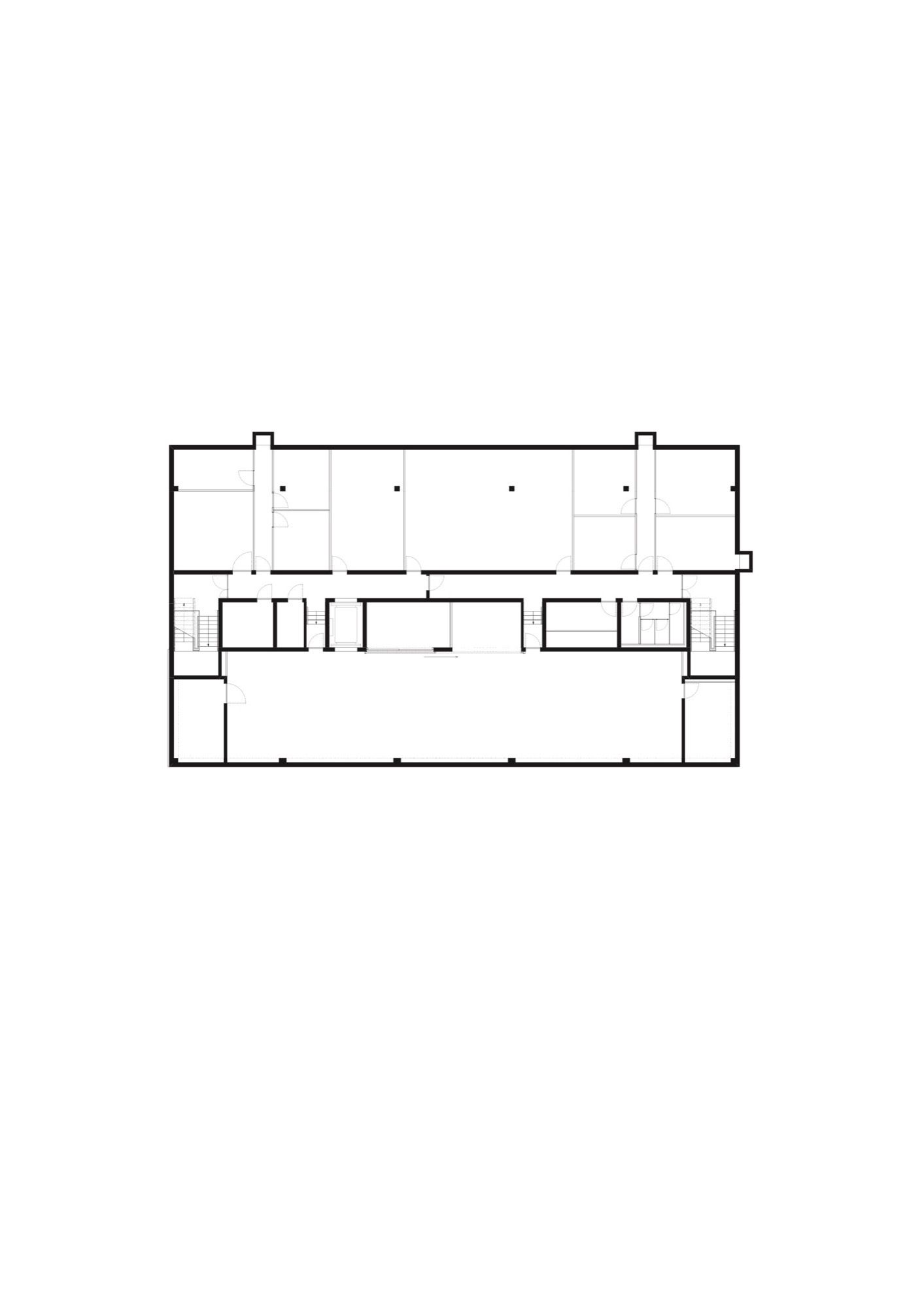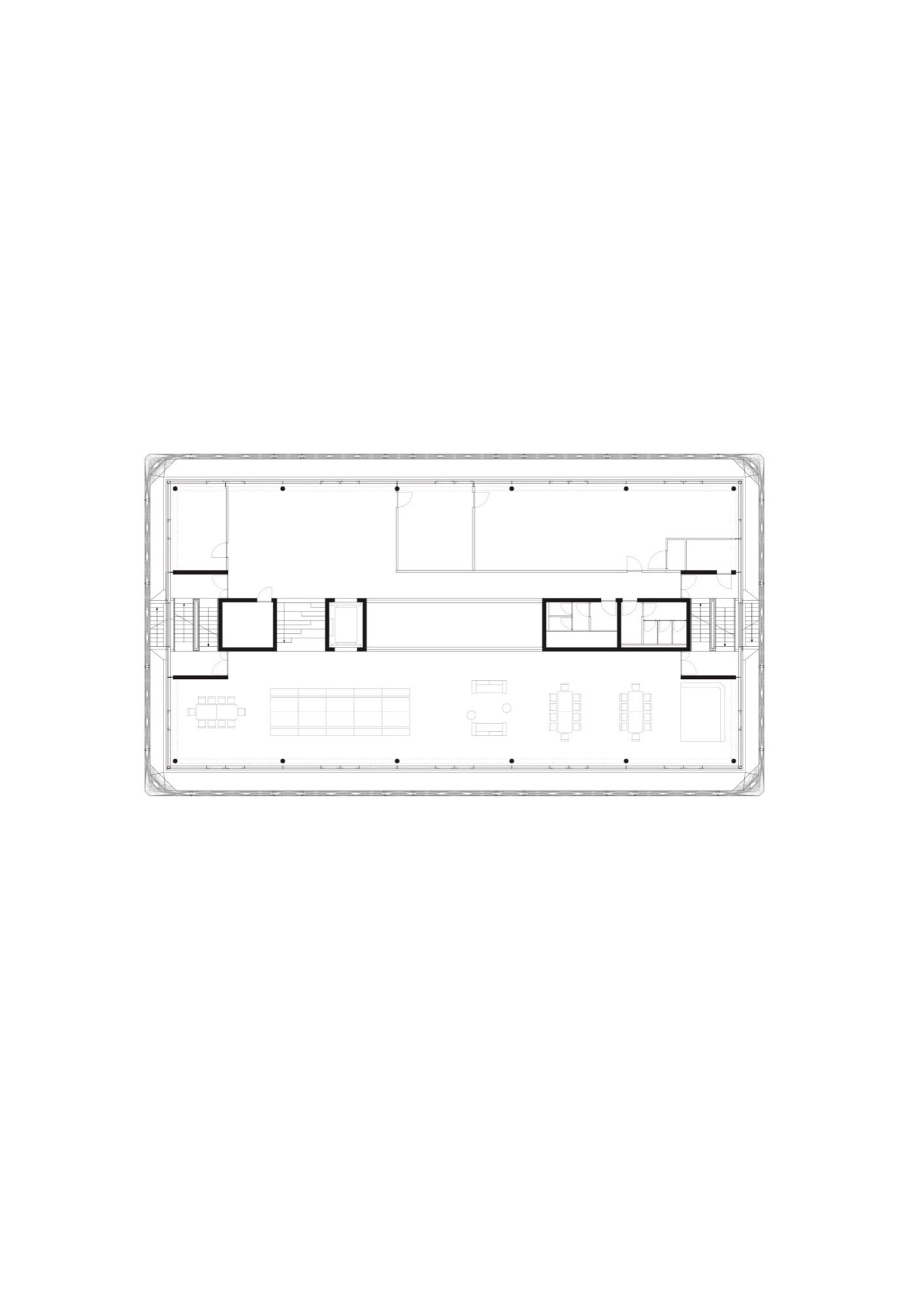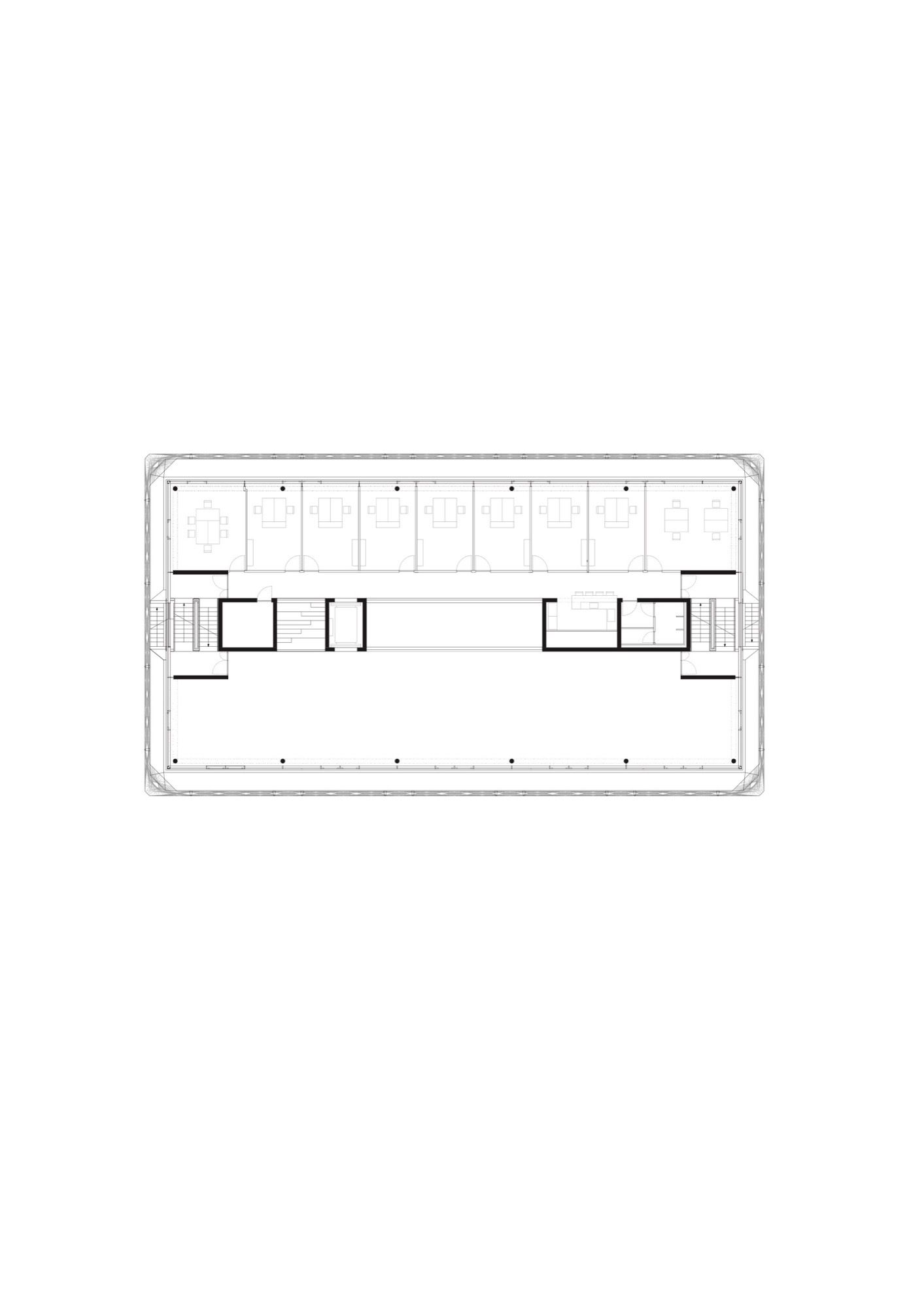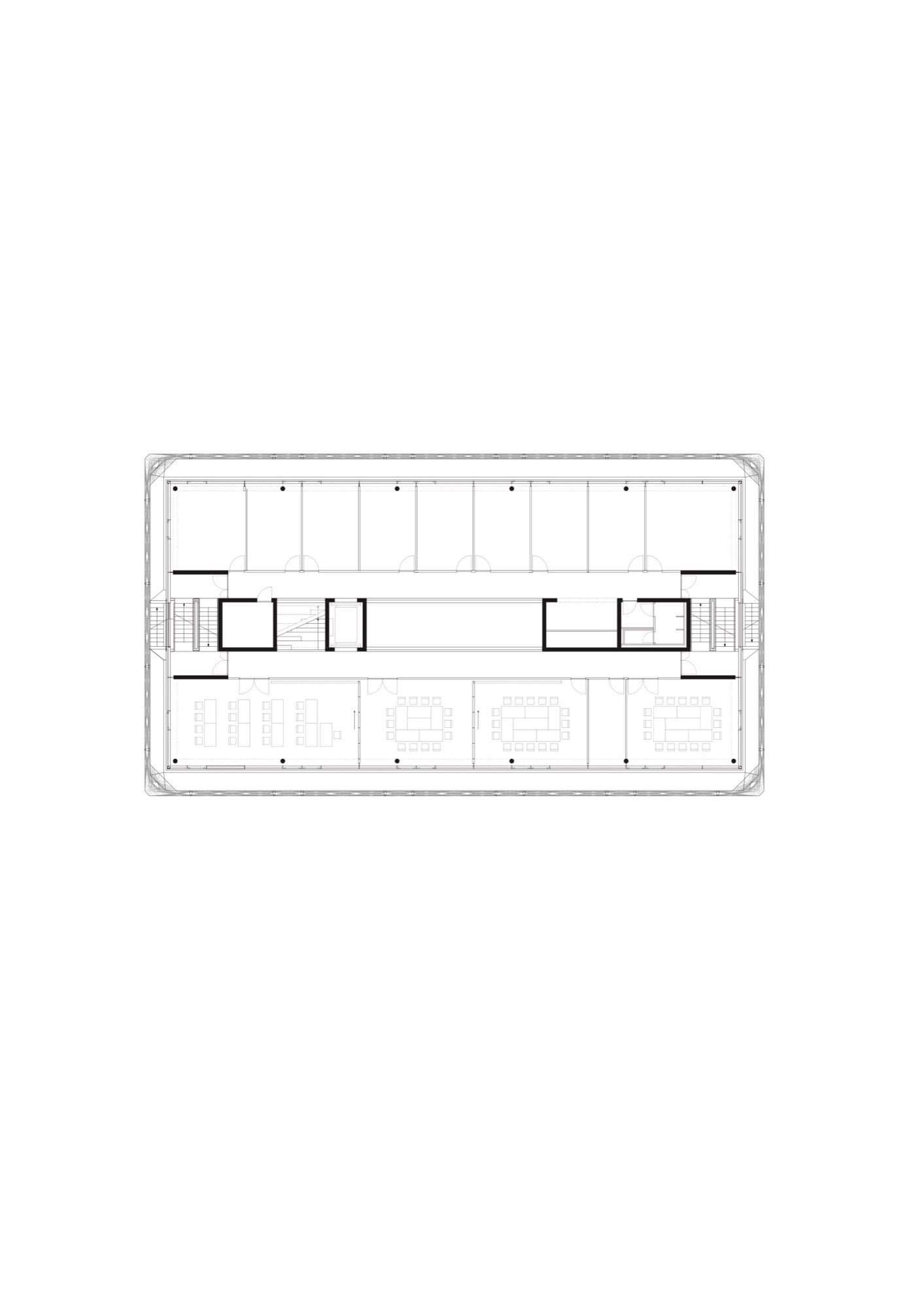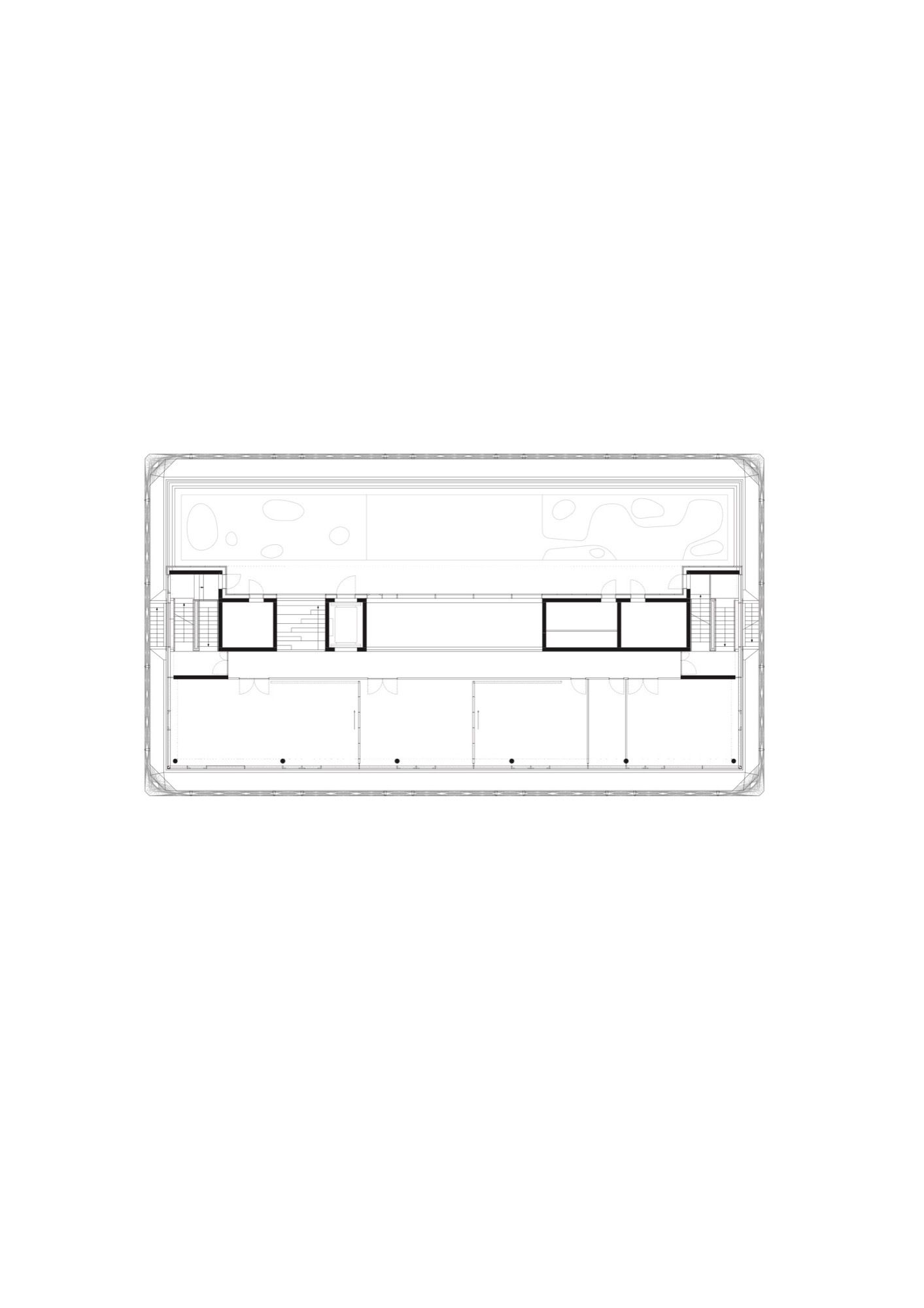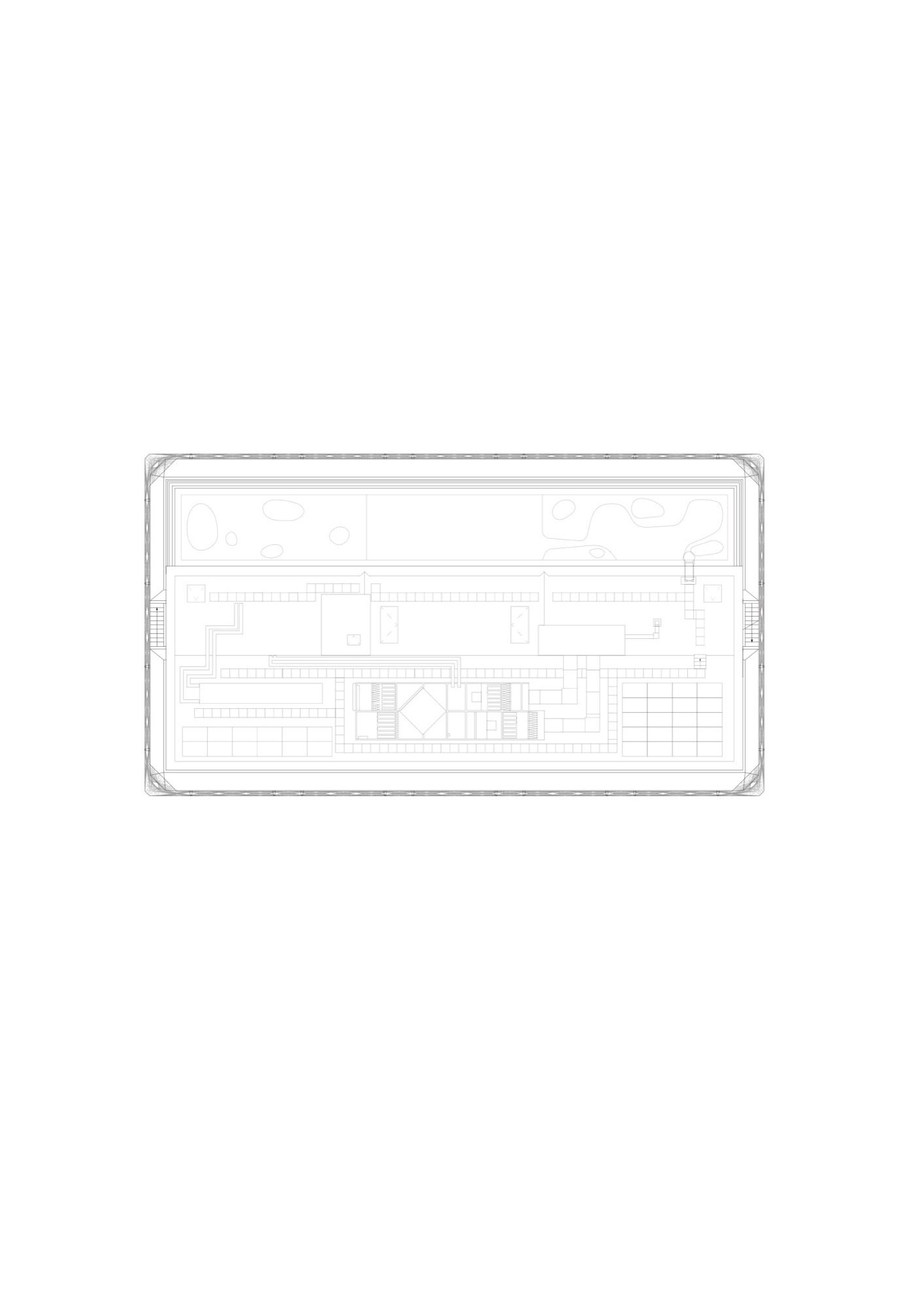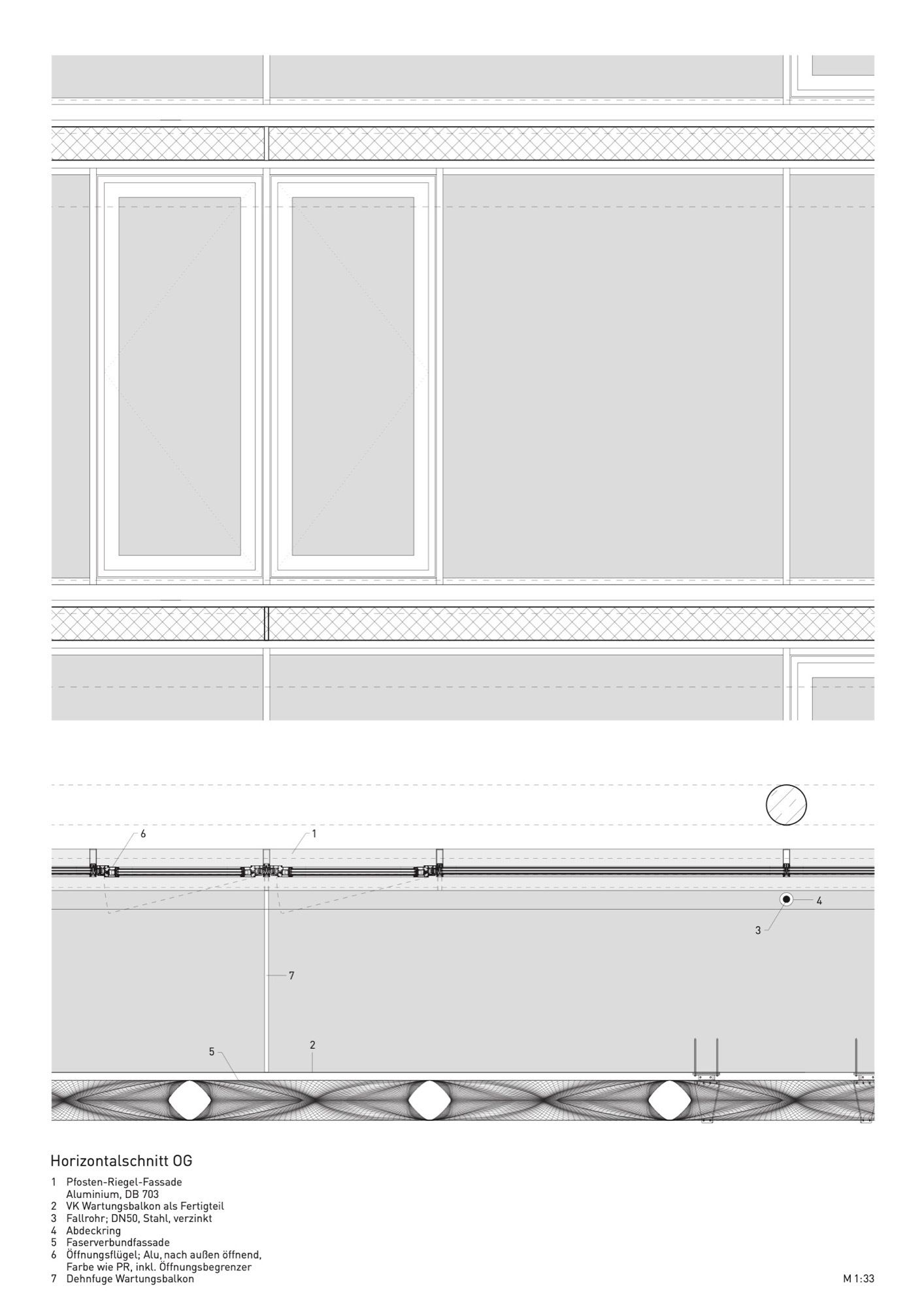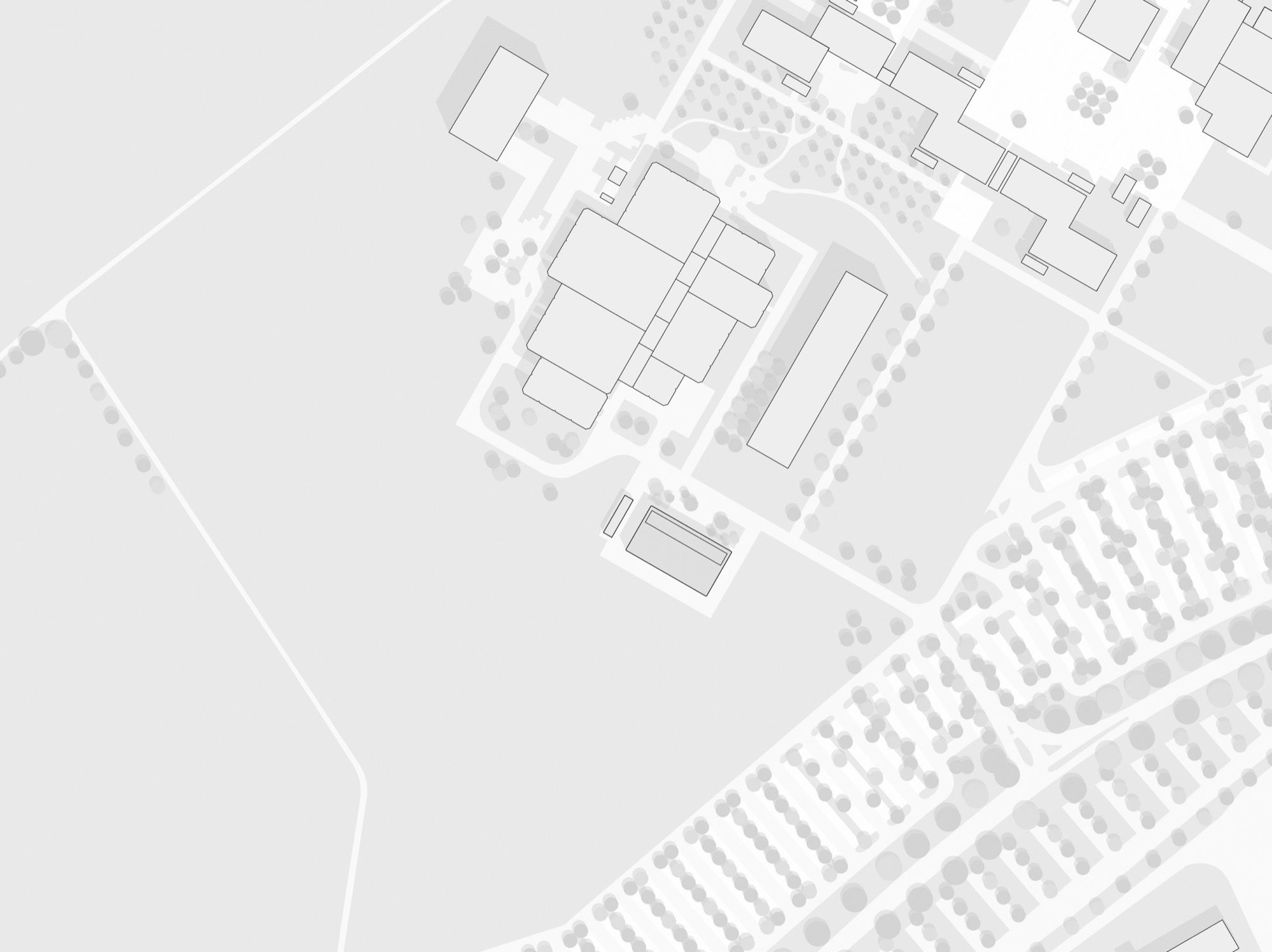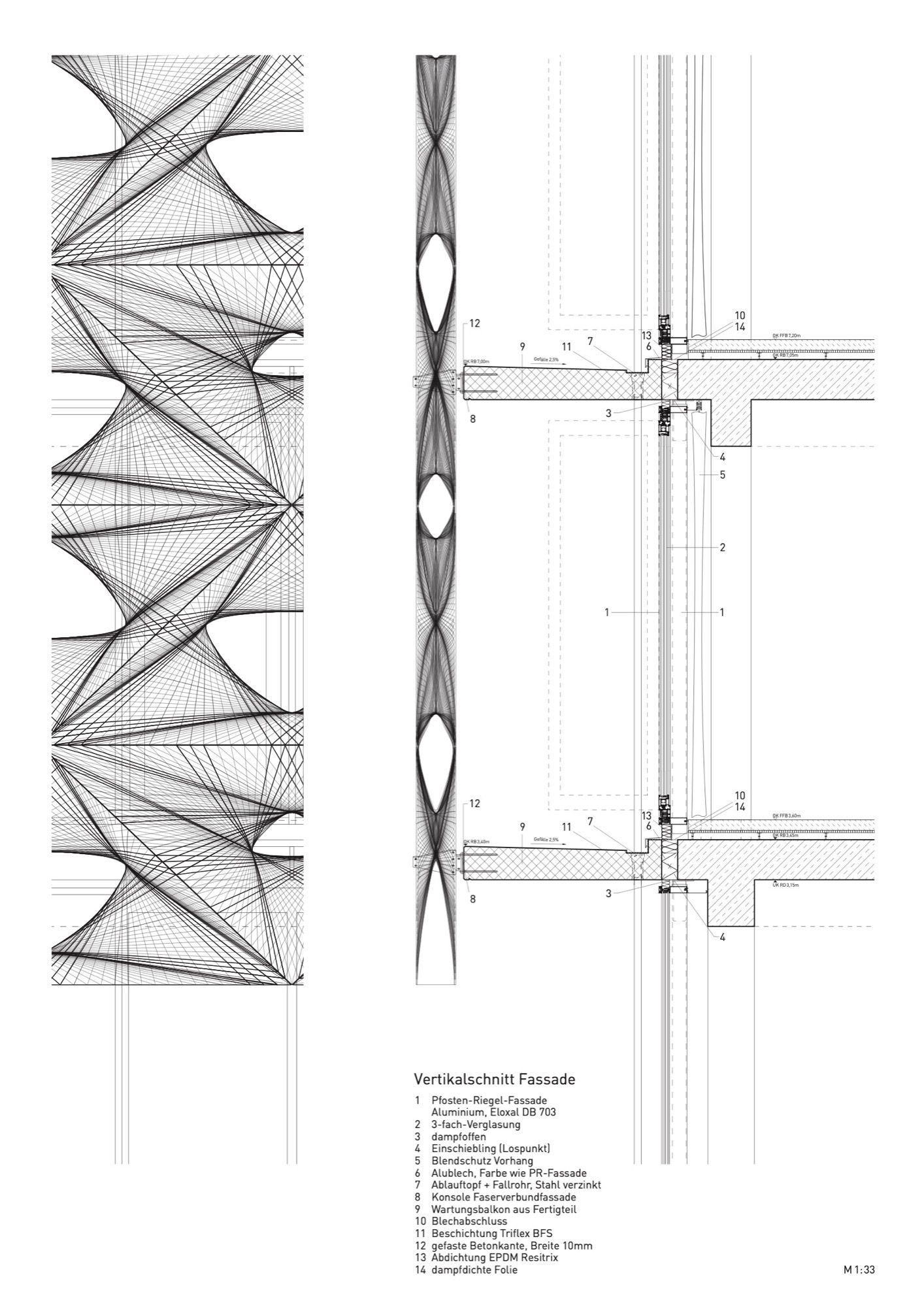The Texoversum Innovation Center, a hub for teaching, research, and innovation in cross-cutting textile technologies, emerged as a key component of Reutlingen University of Applied Sciences’ campus expansion plan. It is poised to make a striking impact on the university’s built environment. The design of the Texoversum is centered around textile construction, both in its function, which weaves together various disciplines and activities within, and in its form, featuring a distinctive exterior with a woven pattern.
Texoversum Innovation Center’s Design Concept
This unique building is the first of its kind to boast a façade made of woven carbon and glass fiber tiles, symbolizing the potential of innovative fiber-based materials and textile techniques. These tiles are custom-made through a robotic winding process, ensuring they serve their intended purpose effectively.
Based on five templates, each tile is placed in a way that follows the sun’s path, resulting in a one-of-a-kind, multi-layered appearance. The tiles are self-supporting and do not require a separate load-bearing frame. Their staggered arrangement allows unobstructed views of the surroundings and fulfills practical functions such as sun and fall protection while also offering aesthetic and symbolic appeal.
The design principles of transparency and interconnectedness extend into the Texoversum’s structure. Inside, it features an open, transparent, split-level layout, with stories staggered at half-level intervals. These levels visually intertwine in the atrium, connecting different sections and creating a spatial continuum that culminates in a spacious rooftop terrace. The interior design carries an industrial character, incorporating finished and unfinished concrete elements and exposed technical ceilings. The open-plan layout fosters collaboration among diverse user groups and provides a dynamic platform for sharing knowledge.
The use of color inside highlights the structure’s flexible and neutral nature, establishing spatial connections between the split levels. A continuous color gradient alludes to the potential of color-printed textiles and pays homage to historical Gobelin tapestries. While the woven façade with intentional openings offers interior views of the surroundings, the cutouts give external observers a postcard-like glimpse into the Texoversum’s bustling working environment.
Project Info:
Area: 4110 m²
Year: 2023
Photographs: Brigida González
Lead Architects: Manfred Sauer, Sabrina Bergmann
Landscape Design: Glück Landschaftsarchitektur GmbH
Project Manager: Sebastian Thomas
Object Planning Secondary Facade: Menges Scheffler Architekten PartG mbB
Structural Planning Secondary Facade: Jan Knippers Ingenieure
Structural Planning Buildings: bwp Burggraf + Reiminger GmbH
Colour Space: Timm Traxler, Juae Kim, Maurizio Maggi, Simon Köppl, Roswitha Allmann
Team Allmannwappner Competition: Philipp Vogeley (Lead), Valerio Calavetta (Project Manager), Timm Traxler
Team Menges Scheffler Architekten Realization: Moritz Münzenmaier, Jiangpeng Chen, Eva Menges, Achim Menges (Lead)
Team Menges Scheffler Architekten Competition: Niccolò Dambrosio, Christoph Zechmeister, Achim Menges (Lead)
Team Jan Knippers Ingenieure: Riccardo La Magna
City: Reutlingen
Country: Germany
© Brigida González
© Brigida González
© Brigida González
© Brigida González
© Brigida González
© Brigida González
© Brigida González
© Brigida González
© Brigida González
© Brigida González
© Brigida González
© Brigida González
© Brigida González
© Brigida González
© Brigida González
© Brigida González
© Brigida González
© Brigida González
© Brigida González
© Brigida González
© Brigida González
© Brigida González
© Brigida González
© Brigida González
© Brigida González
© Brigida González
© Brigida González
© Brigida González
© Brigida González
© Brigida González
© Brigida González


